|
|
|
– Representatives from Sigma-Tau Pharmaceuticals Inc., Alexandria Real Estate Equities, Inc., and Deloitte Consulting LLP Take New Board Seats –
– Charles Morton Becomes New Venable LLP Representative on Board while Mike Baader Stays on as Board Member (Now as Greenspring Associates Representative) –

ROCKVILLE AND BALTIMORE, MARYLAND, August 11, 2014 – BioHealth Innovation, Inc. (BHI) announced today the appointment of four new members to its Board of Directors. Dave Lemus, Chief Executive Officer, Sigma-Tau Pharmaceuticals Inc.; Joel S. Marcus, Chairman, Chief Executive Officer, and Founder, Alexandria Real Estate Equities, Inc. (Alexandria Venture Investments); and Beth Meagher, Principal, Deloitte Consulting LLP, have joined the BHI Board of Directors, effective August 7, 2014, based upon their organizations’ newly committed support of BHI. Charles “Chuck” Morton now represents Venable LLP on the Board, as another new Board member, while Mike Baader, formerly with Venable, will continue to hold a seat on the Board, but now as a representative of Greenspring Associates. Cynthia L. Collins, CEO, Clarient, who had served on the BHI Board since early 2013, is stepping down from her Board position after relocating to the West Coast
“The expansion of and continued diversity within the BHI Board, based upon new key industry and service provider representatives who are all deeply involved in life sciences, is a testament to the positive impact BHI has made on the Central Maryland biohealth community to date,” said Richard Bendis, BHI President & CEO.
“We look forward to the contributions from the new Board members representing these organizations. We’re also pleased to welcome a new Venable representative to the Board and that Mike Baader will continue to add value to the organization now that he is on the Greenspring Associates team,” said Douglas Liu, Chair, BHI Board of Directors, and Senior Vice President of Global Operations for Qiagen. “And, on behalf of the BHI staff and Board, I would also like to offer gratitude to Cynthia Collins for her service and contributions to the BHI Board over the last year and half.”
back to top 

Montgomery County, MD DED Tech Transfer Programs Monthly Event – Second Wednesday of every month: 3:30 PM to 5:00 PM (EDT) Germantown, MD
back to top 

A few days after their state’s primary elections, Chinese-American community leaders in Maryland woke up to an email in their inboxes.
It was from Lily Qi – director of special projects for the government of Montgomery County, an affluent suburb of Washington – thanking them for their support in the reelection campaign of County Executive Ike Leggett, whose primary victory cleared the way for a third term.
“In a low turnout election like this one, every vote counts and the immigrant community holds great sway in tipping the balance,” Qi said in her note. Throughout the campaign, Qi had tirelessly reached out to the Chinese-American community, which accounts for 5 percent of
back to top 

Rockville-based electronic prescription software service provider DrFirst on Wednesday announced $10 million in debt financing from Silicon Valley Bank.
The health IT company has expanded its products over the years to include software in medication management, adherence and care coordination. The company said the financing will go toward product development and an anticipated international expansion in the next year.
back to top 

Emergent BioSolutions Inc. EBS -1.39% today announced that it has submitted a Biologics License Application to the U.S. Food and Drug Administration (FDA) for Anthrax Immune Globulin Intravenous (Human) [AIGIV] as part of a development contract with the Biomedical Advanced Research and Development Authority (BARDA). AIGIV, which was acquired in the Cangene acquisition completed earlier this year, is being developed as an intravenous therapeutic treatment for inhalation anthrax.
“This accomplishment is a testament to the diligent work of our employees within the recently acquired Cangene operations and their years of successful collaboration and partnering with the U.S. government,” said Adam Havey, executive vice president and president biodefense division at Emergent BioSolutions. “We commend BARDA for their steadfast commitment to advancing this key anthrax countermeasure program and remain dedicated to supporting their mission to protect our civilian and military population.”
back to top 

Getting a shot is only a few seconds of discomfort, but that’s the first line of defense against an infectious disease.
It’s a process Emergent Biosolutions in Lansing knows well, as the only company that produces a licensed anthrax vaccine.
“Phase one is safety, phase two is selection and dose ranging, phase three we try to evaluate does it really work do we get the immune response we want,” said President of the Biodefense Division at Emergent Adam Havey.
back to top 

Public health officials have just one tactic to battle the unrelenting Ebola virus outbreak in West Africa — quarantine — but as the disease continues to spread, scientists in Maryland are among those close to discovering other weapons.
Baltimore companies Profectus BioSciences and Paragon Bioservices, as well as researchers at the U.S. Army Medical Research Institute for Infectious Diseases at Fort Detrick in Frederick and the National Institutes of Health in Bethesda, have been part of efforts that have shown a handful of Ebola vaccine candidates are effective in monkeys.
back to top 

In the August 18, 2014 issue of Forbes Magazine, the University of Maryland, College Park was ranked as one of the nation’s most entrepreneurial research universities. These rankings are based off of the number of alumni and students who have identified themselves as founders and business owners on LinkedIn against the school’s total student body which includes undergraduates and graduate combined.
back to top 

Aspiring entrepreneurs in Maryland have two great options for higher education, according to ranking website College Choice.
The University of Maryland, College Park snagged the No. 20 spot on website’s list of the 50 best U.S. colleges for entrepreneurs, while Johns Hopkins University came in a bit lower, at No. 36.
back to top 

Johns Hopkins University is teaming up with Google on a project aimed at speeding up technology commercialization.
Under a new partnership agreement with Google, Hopkins will work on the search engine giant’s Advanced Technology and Projects (ATAP) group, which focuses on developing new technology and moving it quickly to the marketplace.
back to top 

Funding and Research Opportunities
The following funding opportunity announcements from the NHLBI or other components of the National Institutes of Health, might be of interest:
NIH Guide Notices:
- Notice on Annual Reporting Requirements and Revised Financial Closeout Requirements for NIH Administrative Supplements Awarded to Recover Losses Due to Hurricane Sandy under the Disaster Relief Appropriations Act
(NOT-OD-14-112) National Institutes of Health
- Notice of NHLBI Discontinuation of Grant Program “Ancillary Studies in Clinical Trials (R01)”
(NOT-HL-14-232)National Heart, Lung, and Blood Institute
- Notice to Extend the Response Date for the NOT-HL-14-030 “Request for Information (RFI): NHLBI Whole Genome Sequencing Project (NHLBI-WGS)”
(NOT-HL-14-233)National Heart, Lung, and Blood Institute
Program Announcements (PA):
- NHLBI Career Transition Award for Intramural Fellows (K22)
(PAR-14-302)
National Heart, Lung, and Blood Institute
Application Receipt/Submission Date(s): Multiple dates, see announcement.
back to top 

Wrap up a great summer with one last BioBuzz networking event on August 27th from 5:00 – 7:30 p.m. at American Tap Room in Rockville, MD. This location is a short walk from the Metro located in the Rockville Town Center so there are no excuses not to come.
New this month, join us for Table Talks at BioBuzz.
For a new twist to the networking events, starting this month we will be hosting “Table Talks at BioBuzz”. We have enlisted industry experts on various topics who will be joining us to facilitate discussions around their industry related topics of choice. They will be strategically situated at a few tables at our venue so that you will be able to join which ever conversations interest you throughout the evening and participate in some stimulating discussions; while still enjoying the usual, casual atmosphere that BioBuzz offers each month.
This month’s Table Topics and discussion leaders will be announced later this week so keep an eye out.
back to top 

At a laboratory in Baltimore, hairless mice kept in racks of plastic crates are labelled with yellow cards, each identifying a person fighting cancer. These mice are cancer “avatars”—the lumpy tumors visible under their skin come from actual patients.
The animals serve as personalized, living test tubes. Each mouse will eventually be treated with a different drug and its tumors measured. Results showing which medicine worked best will be sent back to a doctor trying to treat a difficult cancer case.
back to top 

The Swiss pharmaceutical giant Roche is set to pay $450 million for a Danish biotech company that develops drugs that silence microRNAs (something considered key to tackling certain diseases).
Roche is targeting the Danish biotech firm Santaris Pharma, according to The Wall Street Journal. Santaris Pharma A/S is a biopharmaceutical company founded in 2003 in Copenhagen. Santaris Pharma A/S has become a leading clinical-stage biopharmaceutical company that develops RNA-targeted medicines. Santaris works on developing drugs for a wide range of diseases using microRNA and mRNA. Their research focuses on infectious disease and metabolic disorders.
back to top 

The University of Maryland has launched an unmanned aircraft systems (UAS) test site in southern Maryland. With support from the University System of Maryland, the site will bring together leaders in academia, industry and government to accelerate UAS research.
Based in St. Mary’s County, a few miles from Naval Air Warfare Center Aviation Division at Patuxent River and the Naval Air Systems Command headquarters, the UMD UAS test site has been set up as a catalyst for research and development, according to its sponsors.
back to top 

ATCC, the premier global biological materials resource and standards organization, announced today that it has received ISO 13485:2003 certification for the development, manufacture, and distribution of standards, controls, reagents and in vitro diagnostic test kits.
Every day researchers in life science, medical diagnostics, applied sciences, and clinical drug development leverage ATCC’s expansive collection of cell lines, microorganisms, cellular and microbial panels, genomic and synthetic nucleic acids, biological products, and associated derivatives to generate quality research and reproducible results. ISO 13485 enhances ATCC’s existing Quality Management Program as an ISO 9001:2008 certified and ISO 17025:2005 and ISO Guide 34:2009 accredited organization.
back to top 

Wall Street may or may not be going through its long-awaited correction these days, but regardless, it still seems to have a hearty appetite for digital health initial public offerings. That appetite is provoking venture capitalists to fund ever-more startups. Through June of this year, $2.3 billion has been sunk into digital health offerings compared with $2 billion in all of 2013, reports digital healthcare accelerator Rock Health.
“We think there’s going to be four to five IPOs each year for the next five years.” said Steve Kraus, the lead healthcare partner at Bessemer Venture Partners, Cambridge, Mass.
back to top 

As a small company, you have a number of things going for you because of your size: You’re agile. You can react quickly to market changes. You can still innovate on a whim.
Big businesses know this all too well, which helps explain what’s driving an increase in the number of corporate venture capital arms cropping up in the past few years. If the old chestnut is correct, a rising tide floats all boats. So as the economy recovers and some sectors like technology seem like they’re heading toward irrational exuberance, corporate VC firms are eager to get in on the action.
back to top 

With an aging Baby Boomer population and broadband bandwidth improved a hundredfold from a decade ago, telemedicine is exploding as a convenient and less costly alternative to the traditional visit to the doctors’ office.
This year in the U.S. and Canada, 75 million of 600 million appointments with general practitioners will involve electronic visits, or eVisits, according to new research from Deloitte.
back to top 

Linda Wittbrodt was perusing Michigan Technological University’s website when she stumbled across a faculty project seeking funds to teach senior citizens online skills.
Wittbrodt thought that was cool, so she donated $25 through a new approach the Upper Peninsula university is using: pitching of an idea online and asking people to make a donation, a strategy known as crowdfunding.
back to top 
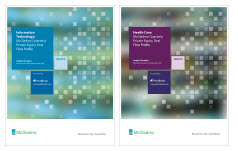
IT deal flow remained steady in 2Q. About $17 billion of PE capital was invested through 89 transactions, with both figures in line with previous quarters. The software segment of the industry is particularly active, with 2014 on pace to surpass the annual deal flow totals of any year following the financial crisis. Software has become industry-agnostic in some respects, as everything from colleges to hospitals to industrial conglomerates have incorporated software solutions into their operating models. For PE investors, software providers offer strong recurring revenue streams and also boast greater add-on potential for platforms.
back to top 

A study conducted by the Economic Alliance of Greater Baltimore Foundation (EAGB) to estimate Baltimore Gas and Electric’s (BGE) economic contributions to the region in 2013 found that its operations generated a total economic impact of $3.81 billion of output and supported 8,686 jobs. This resulted from the company’s direct effect, the effect of companies that provide services to BGE and the effect of employees of both BGE and the service companies. BGE’s activities contribute more than 2 percent of the entire economic output of the BGE service area in central Maryland.
“We are proud to be able to support our partners in their goal of measuring and understanding their importance to the region’s workforce and economy,” said Tom Sadowski, President and CEO of the EAGB. “Our Chief Market Analyst, Patrick Dougherty, did a tremendous job of assessing and articulating the impact of BGE’s economic contributions to the region.”
back to top 

A new collaboration between the USDA’s National Institute of Food and Agriculture (NIFA) Small Business Innovation Research Program (SBIR) and the USDA’s Agricultural Research Service (ARS) encourages SBIR applicants to license ARS technologies and be considered for a SBIR grant.
The relevant language in the SBIR’s “Request for Application” states: “Additional factors that will be considered in the review process include whether an application involves a CRADA with a USDA laboratory, or a license to a USDA technology, or is a resubmission. In the event that two or more applications are of approximately equal merit, the existence of a CRADA with a USDA laboratory or a license to a USDA technology will be an important consideration. If one application is a resubmission, this will also be an important consideration.” The SBIR Website can be found at: http://www.nifa.usda.gov/fo/sbir.
back to top 

Accelerator Corporation, a US-based biotech investment and management company, has attracted a total of $51.1m for its Accelerator IV fund. The three major investors’ cash, Eli Lilly, Pfizer Venture Investments and Johnson & Johnson Development Corporation, make up $50m of the investment.
The three pharmaceutical companies and other existing investors Alexandria Venture Investments, WRF Capital and Arch Venture Partners, are joined by two new strategic investors. These are Harris & Harris, a venture capital firm, and The Partnership Fund for New York City, an evergreen fund by the city’s business and finance leaders.
back to top 

Orgenesis Inc. (OTCQB: ORGS), a leader in the emerging fields of cellular therapy and re-generative medicine, today announced the appointment of industry veteran Scott Carmer as CEO of the company’s North American subsidiary. Carmer has more than 25 years of diverse industry experience within both pharmaceutical and biotech companies. Orgenesis is a pioneer in the field of “cellular trans-differentiation,” a technology that has potential to regenerate glucose-responsive insulin production and restore glycemic homeostasis for patients suffering from various insulin-dependent disorders. By transforming a patient’s own liver cells into new insulin producing cells, Orgenesis hopes to develop a breakthrough therapy for people living with Type 1 Diabetes. In his new role, Carmer will oversee the Orgenesis drug development and commercialization strategy in North America, focusing on the near-term initiation of Phase I and Phase II clinical trials in the United States.
back to top 

The National Center for Engineering Pathways to Innovation (Epicenter) is accepting proposals for its Pathways to Innovation Program.
The Pathways to Innovation Program is designed to help institutions fully incorporate innovation and entrepreneurship into undergraduate engineering education. The program is run by Epicenter, which is funded by the National Science Foundation and directed by Stanford University and the National Collegiate Inventors and Innovators Alliance (NCIIA).
back to top 

As the dust settles from this past week’s mammoth $1.3 billion merger, Siemens Health Services CEO John Glaser tells Healthcare IT News what led up to the Cerner deal, how his experience as a health system CIO could help smooth integration challenges and what to expect – from the two companies and electronic health records in general – over the months and years to come.
back to top 

Dr. Marvin Malek has been yearning and advocating for a publicly financed, single-payer health care system for at least two decades. Now, as Vermont stands on the threshold of being the first state to launch such a plan, he’s confessing to trepidation.
“I am pretty damn nervous,” he confided before bounding off for rounds at the Vermont Central Medical Center, still clutching the bicycle helmet he wore on his ride to work.
back to top 

Grand Challenges Canada, funded by the Government of Canada, has announced funding of seven projects implemented in ASEAN member countries. This funding, totalling $784,000, will support projects that combine scientific/technical, social and business innovation to solve pressing global health challenges.
The funding was announced by Canadian Foreign Affairs Minister John Baird during a visit to Burma, where he is participating in the ASEAN-Canada Post Ministerial Conference. As one of ASEAN’s longest-standing dialogue partners, Canada has enjoyed positive and fruitful relations with the ASEAN region, cooperating on many issues, including regional integration, economic interests and innovation.
back to top 
 Anne Wojcicki bounds into a conference room in Mountain View, California, straight from a five-mile ride from home on an elliptical bike. The 40-year-old cofounder and CEO of the consumer genetic testing firm 23andMe is breathless, and not just because of the workout. On this warm day in mid-June, Wojcicki is “super-excited” about an announcement scheduled for two days hence: the Food and Drug Administration has agreed to review a health-related genetic report the company wants to make available to customers. Anne Wojcicki bounds into a conference room in Mountain View, California, straight from a five-mile ride from home on an elliptical bike. The 40-year-old cofounder and CEO of the consumer genetic testing firm 23andMe is breathless, and not just because of the workout. On this warm day in mid-June, Wojcicki is “super-excited” about an announcement scheduled for two days hence: the Food and Drug Administration has agreed to review a health-related genetic report the company wants to make available to customers.
back to top 
|
|
|



|
In This Issue
|
|
About BHI
BioHealth Innovation (BHI) is a regionally-oriented, private-public partnership functioning as an innovation intermediary focused on commercializing market-relevant biohealth innovations and increasing access to early-stage funding in Maryland.
|
|
|
|

August 13
Germantown Innovation Center

August 14
1776

August 14
Smokey Glen Farm Barbequers

August 27
American Tap Room

September 10-12
Shenzhen Convention & Exhibition Center
|
BioHealth Job Opportunities
|
Newsletter designed and distributed by:

|
|
|
 |
|
The information contained in this website and newsletters is for general information purposes only. The information is provided by BioHealth Innovation via its newsletters, but not written or endorsed in any way by BioHealth Innovation unless otherwise noted. While we endeavor to keep the information up to date and correct, we make no representations or warranties of any kind, express or implied, about the completeness, accuracy, reliability, suitability or availability with respect to the website or the information, products, services, or related graphics contained on the website for any purpose. Any reliance you place on such information is therefore strictly at your own risk.
|
|
|
|
|
|
|

The Montgomery County Council gave final approval Tuesday to an ambitious land-use plan designed to spur creation of a new science-focused town center in the county’s long-neglected eastern sector.
The White Oak Science Gateway Master Plan envisions housing, retail and a hub for medical and life-sciences research adjacent to the Food and Drug Administration headquarters at Route 29 and Industrial Parkway. The plan also adjusts zoning and land-use regulations with the goal of energizing new residential construction and commercial renewal in the White Oak and Hillandale communities.
back to top 
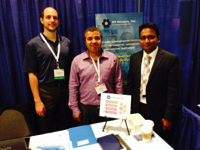
What do you need to turn a brilliant idea into a business? “A good morale boost,” says Abhishek Motayed, Founder and President of N5 Sensors, Inc. of Rockville. Motayed had that boost this month when N5 Sensors received two Small Business Innovation Research (SBIR) awards totaling $250,000. The grants came from the Environmental Protection Agency (EPA) and the National Science Foundation (NSF) towards N5 Sensors work developing low-power, computer chip-size benzene, carbon monoxide, and ammonia sensors.
Image: http://umdtechtransfer.wordpress.com – Pasquale Ferrari, Ratan Debnath, Abhishek Motayed
back to top 

Johns Hopkins researchers Aleksander Popel and Jordan Green knew their research could serve a greater purpose outside their laboratory. But without any business experience, they knew they couldn’t do it alone.
With help from Hopkins’ tech transfer office and the Maryland Innovation Initiative, a state grant fund that invests in research projects with commercialization promise, the pair’s biomedical research is now a company — AsclepiX Therapeutics. The company is developing a better way to treat eye conditions caused by blood vessel abnormalities. Macular edema, which is common among people with diabetes and can lead to blindness, is an example.
Image: Jaclyn Borowski – At left, Niranjan Pandey, senior director of research and development, and Eric Bressler, research specialist, work in the lab at AsclepiX Therapeutics.
back to top 

Qiagen has agreed to partner with AstraZeneca to develop a liquid biopsy-based companion diagnostic test to accompany one of the pharmaceutical company’s lung cancer drugs.
Building on a master framework agreement signed by both companies in 2013, the partnership will involve the creation of a diagnostic test that analyses plasma samples to assess EGFR mutation status in non-small cell lung cancer patients.
back to top 
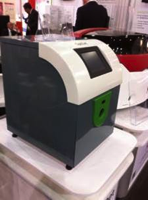
Opticul Diagnostics has won a BioMaryland Center grant to work on a medical device with a France-based company that would immediately identify microorganisms in a wound at a point-of-care setting, such as a hospital.
The device would be used on burn injuries and cutaneous wounds. The rapid identification of the bacteria in the wound would allow for quicker patient treatment.
Opitcul Diagnostics, based at Johns Hopkins University’s Montgomery County Campus, is collaborating with Diafir of Rennes, France. The two companies have received funding through a partnership between BioMaryland Center and Medicen Paris Region.
Image: http://mcc.jhu.edu
back to top 

Montgomery County, MD DED Tech Transfer Programs Monthly Event – Second Wednesday of every month: 3:30 PM to 5:00 PM (EDT) Germantown, MD
back to top 

Innovators and startups pride themselves on being creators of disruptive technologies. We expect them to introduce game-changing solutions that improve our quality of life and enable administrations to govern better.
But the journey from innovative solution to government adoption is far from easy and can seem impossible for smaller companies with cutting-edge technologies.
Image: http://www.statetechmagazine.com
back to top 

Regardless of your stance on Obamacare and Maryland’s Medicare waiver, you can’t ignore that health reform and technology are creating many opportunities for innovation. The BBJ is looking for those innovators. Please click below for contest information.
back to top 

SBA Awards Montgomery County Chamber Community Foundation grant
to conduct veteran small business training course
ROCKVILLE, MD – The Montgomery County Chamber Community Foundation (MCCCF) is pleased to announce that the U.S. Small Business Administration (SBA) will support MCCCF in providing technical training to veteran-owned businesses seeking federal procurement opportunities. Through a Cooperative Agreement with SBA, the Foundation’s National Center for Veteran Institute for Procurement (VIP) will expand and host three training sessions a year (over a twelve month period) to support up to 150 service-disabled veteran-owned small business (SDVOSB) and veteran-owned small businesses (VOSB) to attend the program.
back to top 

With plans to couple Johns Hopkins Medicine’s research cachet and Kaiser Permanente’s population health prowess, the two health giants announced a new “strategic collaboration” on Tuesday.
Kaiser Permanente of the Mid-Atlantic States and Hopkins officials say they will collaborate on patient care by sharing data from electronic medical records and developing better health care models based on evidence of what’s worked best. Kaiser will work closely with Suburban Hospital in Bethesda, which is part of the Johns Hopkins network.
Image: http://m.bizjournals.com
back to top 

A $10.7 million grant to the University of Maryland School of Dentistry and the University of Maryland School of Medicine will fund the collaborative study of biomarkers associated with sexually transmitted diseases such as chlamydia, in hopes of finding new ways to predict the infection and developing new vaccines or treatments. The five-year grant from the National Institute of Allergy and Infectious Diseases is the renewal of a previous $12 million, five-year grant awarded in 2009, bringing the project’s total to $22.7 million.
Image: http://www.oea.umaryland.edu
back to top 
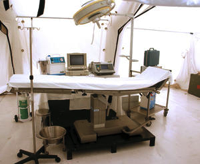
In these times of tight budgets and rapidly evolving science, we must consider new ways to invest biomedical research dollars to achieve maximum impact—to turn scientific discoveries into better health as swiftly as possible. We do this by thinking strategically about the areas of research that we support, as well as the process by which we fund that research.
back to top 

Millions of people make a living without ever setting foot in an office. Particularly in technology, companies are moving away from just outsourcing rote tasks to remote workers and toward building entirely distributed teams. One leader is Elance-oDesk, the largest online marketplace for freelance talent. In addition to providing a platform for distributed and part-time work, the company practices what it preaches. Telecommuting in the United States increased by as much as 79% (paywall) between 2005 and 2012.
back to top 

The Global Innovation Index (GII) report, jointly produced by Cornell University, Insead and Wipo every year, has become a leading source of reference on innovation.
The theme of GII 2014, released on the 18th of July, is ‘Human factor in innovation’. The report covers 143 economies around the world and ranks them on a score of 0-100, using 81 different indicators to gauge innovation capabilities and results. Consistent with the rankings of the past GII reports, the top ten economies in the global innovation index 2014 are Switzerland, UK, Sweden, Finland, Netherland, USA, Singapore, Denmark, Luxemburg and Hong Kong (China), all high income countries, hence pointing towards a clear income-innovation link.
back to top 

According to the latest research out of Johns Hopkins, a new blood test could predict a person’s risk for suicide through their DNA. The blood test would rely on genetics and offer many who are afflicted with mental illness and their doctors a new option in detecting suicidal behavior.
back to top 
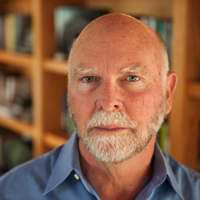
Genome scientist and entrepreneur J. Craig Venter is best known for being the first person to sequence his own genome, back in 2001.
This year, he started a new company, Human Longevity, which intends to sequence one million human genomes by 2020, and ultimately offer Web-based programs to help people store and understand their genetic data (see “Microbes and Metabolites Fuel an Ambitious Aging Project”).
Image: http://www.technologyreview.com – J. Craig Venter
back to top 
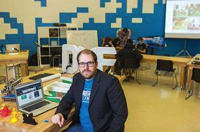
Education technology, or ed-tech, is getting big in Baltimore and local experts think Maryland has a shot at being a leader in this technology niche.
But it won’t happen overnight.
“I think we have a unique opportunity to build an ecosystem,” said Frank Bonsal III, an ed-tech venture capitalist who leads Towson University’s business incubator. “An ecosystem takes 20 years to build. We’re on year three.”
Image: Jaclyn Borowski – Andrew Coy, executive director of the Digital Harbor Foundation, says students should play a bigger role in growing ed-tech.
back to top 

When it comes to raising capital for a tech startup, savvy entrepreneurs know how important it is to hustle. From trying to attract the attention of VCs to appearing on television shows like ABC’s Shark Tank, these days when it comes to raising cash, everyone is out to get their share.
However, you may be surprised to learn that in this high-tech world, one very traditional institution is looking for smart entrepreneurs to give money to. Aspiring entrepreneur, meet the Small Business Administration (SBA).
back to top 

Maryland Health Secretary Dr. Joshua Sharfstein will step down in January to join Johns Hopkins University.
Sharfstein’s move comes as Maryland is trying to revamp its failed health exchange in time for November open enrollment and as Gov. Martin O’Malley’s administration winds down.
Image: Nicholas Griner Maryland Health Secretary Dr. Joshua Sharfstein is stepping down in January and will join Johns Hopkins University.
back to top 

The FLC planner visually communicates the outstanding research and development efforts of the federal laboratory system. Images and captions tell the story of the technology’s scientific relevance and potential impact.
Printed annually, the planner is distributed to over 10,000 recipients, including members of Congress, scientists, researchers, agency representatives, laboratory directors, technology transfer professionals, students, academia, and members of industry.
Image: http://www.federallabs.org
back to top 

Funding and Research Opportunities
The following funding opportunity announcements from the NHLBI or other components of the National Institutes of Health, might be of interest:
NIH Guide Notices:
- Notice on Annual Reporting Requirements and Revised Financial Closeout Requirements for NIH Administrative Supplements Awarded to Recover Losses Due to Hurricane Sandy under the Disaster Relief Appropriations Act
(NOT-OD-14-112) National Institutes of Health
- Notice of NHLBI Discontinuation of Grant Program “Ancillary Studies in Clinical Trials (R01)”
(NOT-HL-14-232)National Heart, Lung, and Blood Institute
- Notice to Extend the Response Date for the NOT-HL-14-030 “Request for Information (RFI): NHLBI Whole Genome Sequencing Project (NHLBI-WGS)”
(NOT-HL-14-233)National Heart, Lung, and Blood Institute
Program Announcements (PA):
- NHLBI Career Transition Award for Intramural Fellows (K22)
(PAR-14-302)
National Heart, Lung, and Blood Institute
Application Receipt/Submission Date(s): Multiple dates, see announcement.
back to top 

The 2014 UEDA Awards of Excellence finalists have been chosen and the competition this year is at an all time high. Each year, universities and organizations across North America submit nominations for innovative programs that focus on developing economic prosperity in their communities and beyond. A panel university and economic development professionals have chosen 19 finalists from the group of nominated projects.
The UEDA awards are designed to help accelerate these programs by recognizing cutting edge initiatives, and to promote their adoption by other universities and communities. Program categories include: Community Connected Campuses, Innovation and Entrepreneurship, Leadership and Collaboration, Research and Analysis, Talent Development.
back to top 

The healthcare system in the U.S. is a slow-moving, slow-changing beast, but it’s also riddled with inefficient parts that beg for data-driven reinvention. That’s created huge opportunities for startups — and some of them are already seeing the payoff. The Affordable Care Act and accompanying legislation like the HITECH Act have lit a fire under the movement to rethink they way we deliver and pay for healthcare. Accordingly, investment in the digital health space has accelerated in 2014; at the end of June it totaled $2.2 billion, already exceeding 2013’s total funding just halfway through the year.
back to top 
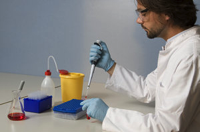
Report: “Safe Science: Promoting a Culture of Safety in Academic Chemical Research”
Author: Committee on Establishing and Promoting a Culture of Safety in Academic Laboratory Research
Organization: National Research Council
Summary: The National Research Council formed a panel of university lab-safety experts after a series of campus accidents, including several deaths, emphasized that academic labs have a far worse safety record than their corporate counterparts do.
back to top 
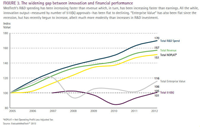
For years the standard operating procedure for the medical device world has been: Bring good tech to patients and be rewarded by the market. Healthcare reform and particularly the consolidation of doctor practices is making this model obsolete. Now the challenge is more along the lines of “Justify your existence.”
Device companies have to revamp the traditional business model to show how their products save money and help patients in the long term.
Image: http://medcitynews.com
back to top 
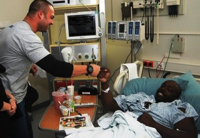
NEW YORK (Reuters) – Ditching handshakes in favor of more informal fist bumps could help cut down on the spread of bacteria and illnesses, according to a study released on Monday.
The study in the American Journal of Infection Control found that fist bumps, where two people briefly press the top of their closed fists together, transferred about 90 percent less bacteria than handshakes.
Image: By The U.S. Army (Fist bump) [CC-BY-2.0 (http://creativecommons.org/licenses/by/2.0)], via Wikimedia Commons
back to top 

We all struggle for a moment of insight. Whether you’ve been banging your head against the wall for days or just woke up to a problem this morning, the desire for a creative boost is a powerful one. It’s the same feeling that plagues writers facing a blank page or advertisers developing a brand’s next campaign—and learning how to achieve it can have a profound impact. Here are some tips to avoid your next headache or create something the world has never seen before:
back to top 
|
|
|



|
In This Issue
|
|
About BHI
BioHealth Innovation (BHI) is a regionally-oriented, private-public partnership functioning as an innovation intermediary focused on commercializing market-relevant biohealth innovations and increasing access to early-stage funding in Maryland.
|
|
|
|

August 13
Germantown Innovation Center

August 14
1776

August 14
Smokey Glen Farm Barbequers

September 10-12
Washington, DC | San Francisco, CA

September 15-16
Sheraton Pentagon City
|
BioHealth Job Opportunities
|
Newsletter designed and distributed by:

|
|
|
 |
|
The information contained in this website and newsletters is for general information purposes only. The information is provided by BioHealth Innovation via its newsletters, but not written or endorsed in any way by BioHealth Innovation unless otherwise noted. While we endeavor to keep the information up to date and correct, we make no representations or warranties of any kind, express or implied, about the completeness, accuracy, reliability, suitability or availability with respect to the website or the information, products, services, or related graphics contained on the website for any purpose. Any reliance you place on such information is therefore strictly at your own risk.
|
|
|
|
|
|
|

The implications of the world’s largest collaborative biological project in the year 2000—the Human Genome Project-combined with the Big Data revolution in the medical sciences holds out tremendous promise for human health. Recognizing the imminent need for the next generation of bioinformatics and genomics tools, four academic entrepreneurs from the prestigious Indian Institute of Science co-founded Strand Genomics Inc. (Strand). “Our focus is on personalized clinical genomics and molecular diagnostics. To address the grand challenge of the “$1000 genome and million dollar interpretation”, we have developed a clinical genomics interpretation and reporting platform, StrandOmics,” says Vijay Chandru, Ph.D, Co-founder, Chairman and CEO, Strand.
back to top 
 Qiagen has acquired an exclusive global license from the University of Tokyo for the biomarker SF3B1. The company said it sees potential for developing companion diagnostics to guide myelodysplastic syndromes (MDS) treatment with new anticancer compounds under development that target the SF3B1 gene. Qiagen has acquired an exclusive global license from the University of Tokyo for the biomarker SF3B1. The company said it sees potential for developing companion diagnostics to guide myelodysplastic syndromes (MDS) treatment with new anticancer compounds under development that target the SF3B1 gene.
back to top 
 Inside sources reveal that Indian pharmaceutical generics firm Lupin, along with other U.S. pharma firms, is considering bidding for GlaxoSmithKline’s auctioned mature and generic drugs. Inside sources reveal that Indian pharmaceutical generics firm Lupin, along with other U.S. pharma firms, is considering bidding for GlaxoSmithKline’s auctioned mature and generic drugs.
GSK seeks to divest its lineup of mature drugs in an effort to improve its growth profile by getting rid of its off-patent drugs in North America and Western Europe. The drugs are estimated to bring in annual sales of 1 billion pounds and are expected to fetch two to three times the price on the auction block.
back to top 
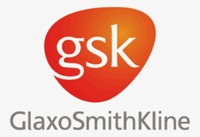
GSK has submitted an application for the world’s first malaria vaccine to the European Medicines Agency (EMA).
The vaccine candidate, RTS,S, is produced in yeast cells and targets the Plasmodium falciparum malaria parasite, most common in sub-Saharan Africa. It uses GSK’s proprietary AS01 adjuvant system, containing QS-21 Stimulon adjuvant licensed from Antigenics, a subsidiary of Agenus, as well as monophosphoryl lipid A (MPL) and liposomes.
back to top 

Pfizer’s bid to get AstraZeneca has turned out to have a silver lining.
Dr Jane Osbourn, who runs MedImmune’s operations at Granta Park, told me: “It has gelled the team together at AstraZeneca and MedImmune (which is owned by AZ), and this is a silver lining to what has happened.
back to top 

Out of the roughly 2 million Americans suffering from degenerative heart disease, only about 50,000 of them receive life-saving mitral valve surgery. This is primarily because the most common treatment, an open-heart procedure, can last between three and six hours and is extremely complex and high-risk.
Maryland-based Harpoon Medical plans to revolutionize that process with a new device that could reduce the procedure to just 60 minutes. Using their device, a patient’s chest would remain closed and the heart would continue beating during the procedure. It would cut recovery time from weeks to days and reduce risk factors significantly.
back to top 

Advaxis, Inc. ADXS +2.08% , a clinical-stage biotechnology company developing cancer immunotherapies, has entered into a clinical trial collaboration with MedImmune, the global biologics research and development arm of AstraZeneca. The Phase I/II immunotherapy study will evaluate the safety and efficacy of MedImmune’s investigational anti-PD-L1 immune checkpoint inhibitor, MEDI4736, in combination with Advaxis’ lead cancer immunotherapy vaccine, ADXS-HPV, as a treatment for patients with advanced, recurrent or refractory human papillomavirus (HPV)-associated cervical cancer and HPV-associated head and neck cancer.
Both MEDI4736 and ADXS-HPV are cancer immunotherapies, a new class of treatments that use the body’s own immune system to help fight cancer. MEDI4736 is designed to counter the tumour’s immune-evading tactics by blocking a signal that helps tumours avoid detection, while ADXS-HPV enhances the ability of immune cells to combat the tumour. Preclinical evidence suggests that the combination of ADXS-HPV with a checkpoint inhibitor, such as MEDI4736, can enhance overall anti-tumour response.
back to top 

Holy Cross Germantown Hospital is moving closer to opening, forming an inaugural medical staff and ramping up orientation for those new hires, officials said Tuesday.
When the hospital opens Oct. 1, it will have about 580 people working on site, said spokeswoman Yolanda Gaskins. Already, a few Holy Cross Germantown hospital senior managers have begun working at the location using on-site trailers as offices, she said. The $202 million, 93-bed hospital on the campus of Montgomery College in Germantown will be the first new Montgomery County hospital in 35 years.
back to top 
 Montgomery County plans to launch a major technology initiative in its public schools in August, providing 40,000 laptops and tablets to students as part of a project that will expand quickly in coming years, officials said Thursday. Montgomery County plans to launch a major technology initiative in its public schools in August, providing 40,000 laptops and tablets to students as part of a project that will expand quickly in coming years, officials said Thursday.
back to top 
 Infectious diseases, pathogens and bioterrorism agents are all inside a new building downtown. Jessica Kartalija explains it’s great news for researchers at Johns Hopkins. It’s the newest addition to the Baltimore Science and Technology Park at Johns Hopkins. Inside, it’s a state-of-the-art lab that will keep Maryland on the cutting edge of public health and technology. Infectious diseases, pathogens and bioterrorism agents are all inside a new building downtown. Jessica Kartalija explains it’s great news for researchers at Johns Hopkins. It’s the newest addition to the Baltimore Science and Technology Park at Johns Hopkins. Inside, it’s a state-of-the-art lab that will keep Maryland on the cutting edge of public health and technology.
back to top 
 The Intellectual Property Owners (IPO) recently published a list of the top 100 universities worldwide granted U.S. patents in 2013, and among them were three local schools: Johns Hopkins University, the University of Maryland and the University of Virginia. The Intellectual Property Owners (IPO) recently published a list of the top 100 universities worldwide granted U.S. patents in 2013, and among them were three local schools: Johns Hopkins University, the University of Maryland and the University of Virginia.
back to top 

Apollo Hospitals today announced a partnership with Strand Life Sciences to launch the latter’s genomic tests across its hospitals.
The partnership in gene-based diagnostics with the Bangalore-based healthcare research company will help doctors at Apollo to develop personalised medicine for targeted treatments and better patient outcomes.
back to top 

The Johns Hopkins University has joined the National Science Foundation’s National Innovation Network and becomes the fourth member university in the NSF Innovation Corps regional collaboration led by the University of Maryland, along with the George Washington University and Virginia Tech.
The NSF has approved a request from the three original universities to officially include Johns Hopkins in the I-Corps program’s “node” in the Mid-Atlantic called DC I-Corps, which was formed last year with $3.75 million in NSF funding.
back to top 

August 13, 2014 3:30 – 5:00 PM
Germantown Innovation Center, 20271 Goldenrod Lane, 2nd Floor, Germantown, MD 20874
PRESENTERS: Konstantina Manjoros Katcheves, Esq., Vice President and Global Head of Intellectual Property, Lonza Group, Ltd.
ABSTRACT:
Lonza Group Ltd., headquartered in Basel, Switzerland, is a worldwide leader in supplying the pharmaceutical and biotechnology industries with biopharmaceuticals. Come to learn first-hand how you can partner and collaborate with this international firm and develop a win-win relationship with Lonza.
Biography:
Konstantina Manjoros Katcheves, Esq. As global head of the intellectual property department at Lonza, Tina is responsible for patent, trademark and licensing strategy as well as related litigation. She manages a worldwide team of professionals for the Basel, Switzerland-based pharmaceutical company. She is responsible for intellectual property strategy and business alignment including patent, trademark and licensing of Lonza IP for Lonza’s Biologics businesses, including cell therapy and antibody therapeutics.
Tina has past experience in private practice, as a USPTO examinerand registered patent attorney. She is an author and speaker on a wide variety of topics including intellectual property and commercialization.
back to top 

Eight startup companies are among 67 recipients of Maryland Innovation Initiative awards in fiscal 2014.
The Maryland Innovation Initiative gave a total of $6.4 million to research projects and startups with ties to universities in the state. The innovation initiative is designed to spur commercialization of university research.
back to top 

Funding and Research Opportunities
The following funding opportunity announcements from the NHLBI or other components of the National Institutes of Health, might be of interest:
NIH Guide Notice:
- Request for Information: Shared Instrumentation Grant Program (S10)
(NOT-OD-14-104) Division of Program Coordination, Planning and Strategic Initiatives, Office of Research Infrastructure Programs
- Extramural Loan Repayment Program for Clinical Researchers (LRP-CR)
(NOT-OD-14-105) National Institutes of Health
- Extramural Clinical Research Loan Repayment Program for Clinical Researchers from Disadvantaged Backgrounds (LRP-IDB)
(NOT-OD-14-106) National Institutes of Health
- Extramural Loan Repayment Program for Pediatric Research (LRP-PR)
(NOT-OD-14-107) National Institutes of Health
- Extramural Loan Repayment Program for Contraception and Infertility Research (LRP-CIR)
(NOT-OD-14-108) National Institutes of Health
- Extramural Loan Repayment Program for Health Disparities Research (LRP-HDR)
(NOT-OD-14-109) National Institutes of Health
- Notice of the National Institute on Deafness and Other Communication Disorders (NIDCD) Participation in PA-14-114 “Behavioral Interventions to Address Multiple Chronic Health Conditions in Primary Care (R01)”
(NOT-DC-14-003) National Institute on Deafness and Other Communication Disorders
- Notice of Change to the Award Budget and Submission Requirements for PAR-12-198 “Improving Diet and Physical Activity Assessment (R01)”
(NOT-DK-14-023) National Institute of Diabetes and Digestive and Kidney Diseases
- Notice of NICHDs Participation in PAR-13-055 “Dissemination and Implementation Research in Health (R01)”
(NOT-HD-14-017) Eunice Kennedy Shriver National Institute of Child Health and Human Development
- Request for Information: NHLBI Whole Genome Sequencing Project (NHLBI-WGS)
(NOT-HL-14-030) National Heart, Lung, and Blood Institute
- Notice of the Change in the Expiration Date for PA-11-347 “NINDS SBIR Technology Transfer (SBIR-TT [R43/R44])”
(NOT-NS-14-038) National Institute of Neurological Disorders and Stroke
Please note that most links to RFAs, PAs, and Guide Notices will take you to the NIH Web site. RFPs will take you to FedBizOpps. Links to RFPs will not work past their proposal receipt date. Archived versions of RFPs posted on FedBizOpps can be found on the FedBizOpps site using the FedBizOpps search function. Under “Document to Search,” select Archived Documents.
back to top 
 Jennifer Hammaker has watched biotech company respEQ Inc. grow from an experiment in a Johns Hopkins lab to a fledgling startup now looking for investors. Jennifer Hammaker has watched biotech company respEQ Inc. grow from an experiment in a Johns Hopkins lab to a fledgling startup now looking for investors.
RespEQ is a prime example of what Hammaker, who leads the Maryland Innovation Initiative, hopes the state’s research commercialization program will produce more of in the future.
back to top 
 The startup world will perk up to hear that RockthePost and CoFoundersLab recently merged to form Onevest. Together the two companies will provide a single source for startup founders to not only find investors but also find the right co-founders all online. The startup world will perk up to hear that RockthePost and CoFoundersLab recently merged to form Onevest. Together the two companies will provide a single source for startup founders to not only find investors but also find the right co-founders all online.
back to top 
 Kaiser is well known healthcare delivery model and outcomes, but, it turns out, it’s also among the best at engaging members via the web and mobile apps. The organization says in its 2013 annual report (just released) that about 4.4 million of its 9.1 million members use its online health management platform My Health Manager. Kaiser is well known healthcare delivery model and outcomes, but, it turns out, it’s also among the best at engaging members via the web and mobile apps. The organization says in its 2013 annual report (just released) that about 4.4 million of its 9.1 million members use its online health management platform My Health Manager.
back to top 
 It helps to have a friend. And for several pharma giants scrambling to cut R&D costs, those friends are venture capital firms that co-invest in startups whose new drugs and platform technologies appear attractive. In some cases, these pharma-venture “alliances” launch the startups, using the expertise of VC firm partners and company executives. It helps to have a friend. And for several pharma giants scrambling to cut R&D costs, those friends are venture capital firms that co-invest in startups whose new drugs and platform technologies appear attractive. In some cases, these pharma-venture “alliances” launch the startups, using the expertise of VC firm partners and company executives.
back to top 

He’s pointing out a challenge for entrepreneurs, not griping. He’s lived in California, Boston and New York, and he chose this area for a reason — “Maryland-D.C. is the mecca of security.”
So far, the bet’s paid off. ZeroFOX, which focuses on cybersecurity threats from social media, has raised $13 million from both local and out-of-state investors. Among them is Sourcefire’s former chief financial officer. That’s allowed the company to expand from its original two people to nearly 50.
back to top 

Like its business incubators for technology, cybersecurity and biotech, Montgomery County hopes a kitchen incubator will help food entrepreneurs thrive in the county.
The county is seeking proposals for a private partner to help “accelerate the commercialization of creations from local food entrepreneurs” by establishing a kitchen incubator, a shared kitchen space food entrepreneurs can use to start their businesses.
back to top 

There is clearly something wrong with pharmaceutical innovation.
Antibiotic-resistant infections sicken more than two million Americans every year and kill at least 23,000. The World Health Organization has warned that a “post-antibiotic era” may be upon us, when “common infections and minor injuries can kill.” Even the world’s tycoons consider the proliferation of antibiotic-resistant bacteria one of the crucial global risks of our times, according to a survey by the World Economic Forum.
back to top 

NextNav LLC, the bicoastal location services venture launched by XM Satellite Radio founder Gary Parsons, announced on Thursday a $70 million Series D funding led by New Enterprise Associates and Oak Investment Partners.
The eight-figure round is the latest high-dollar financing for NextNav, which two years ago reported a $50 million raise from Columbia Capital. Columbia also joined in the most recent round, alongside Telcom Ventures and Goldman Sachs Investment Partners.
back to top 

On Thursday, July 17, four science experts served as witnesses at the U.S. Senate Committee on Commerce, Science, and Transportation hearing, “The Federal Research Portfolio: Capitalizing on Investments in R&D.” The hearing considered the federal government’s role in research and development (R&D), and the nation’s STEM education and outreach initiatives.
Attendees in the Capitol hearing room were Mariette DiChristina, editor in chief and senior vice president of Scientific American; Vinton G. Cerf, computer scientist, Google’s Internet Evangelist and one of the fathers of the Internet; Neal F. Lane, former director of the White House Office of Science and Technology Policy; and Stephen E. Fienberg, professor of statistics and social science at Carnegie Mellon University.
back to top 

Maryland companies raised $64 million in venture capital funding this spring, with some of the biggest payouts flowing to Baltimore cybersecurity startups.
That’s according to the latest MoneyTree report from PricewaterhouseCoopers and the National Venture Capital Association. The report, which uses Thomson Reuters data, tracks money flowing to startups and later-stage firms across the country.
back to top 
 Founders Fund already stands out for backing startups with radical ideas, including Counsyl, Hampton Creek, Planet Labs, and SpaceX. Now the venture firm is making a formal commitment to funding startups in aeronautics, life sciences, nanotechnology, and other geeky realms. Founders Fund has dedicated a small percentage of its new $1 billion fund to a new initiative called FF Science, through which the firm will make seed-stage deals. Founders Fund already stands out for backing startups with radical ideas, including Counsyl, Hampton Creek, Planet Labs, and SpaceX. Now the venture firm is making a formal commitment to funding startups in aeronautics, life sciences, nanotechnology, and other geeky realms. Founders Fund has dedicated a small percentage of its new $1 billion fund to a new initiative called FF Science, through which the firm will make seed-stage deals.
back to top 
 While considerable attention has been heaped on the public health insurance exchanges over the year, private health insurance exchanges “are experiencing hyper-growth” and enrollment could exceed that of public exchanges by 2017, “if not sooner,” according to Accenture. While considerable attention has been heaped on the public health insurance exchanges over the year, private health insurance exchanges “are experiencing hyper-growth” and enrollment could exceed that of public exchanges by 2017, “if not sooner,” according to Accenture.
back to top 

After decades as a technological laggard, medicine has entered its data age. Mobile technologies, sensors, genome sequencing, and advances in analytic software now make it possible to capture vast amounts of information about our individual makeup and the environment around us. The sum of this information could transform medicine, turning a field aimed at treating the average patient into one that’s customized to each person while shifting more control and responsibility from doctors to patients.
The question is: can big data make health care better?
back to top 

Capital efficiency has become a mantra at Atlas, one shared by a number of other early stage biotech investors. It’s a term often repeated in discussions about building young companies, and yet it has become clear that there’s no consistent definition of what the term means.
A common perception is that capital efficiency is synonymous with tightly constrained, small amounts of investor capital – the “small ball” criticism of capital efficiency. Others think it means only ultra-lean, asset-centric, virtual companies. There’s also the perception that you can’t build something big if you are capital efficient.
back to top 
 In 1957, eight entrepreneurs decided to do something that seemed crazy. They launched a new tech company called Fairchild Semiconductor in a small town south of San Francisco. The entrepreneurs had a difficult start, but Fairchild eventually became the first major computer chip company in the region. In 1957, eight entrepreneurs decided to do something that seemed crazy. They launched a new tech company called Fairchild Semiconductor in a small town south of San Francisco. The entrepreneurs had a difficult start, but Fairchild eventually became the first major computer chip company in the region.
back to top 

The BioMaryland Center today joined with Medicen Paris Region to announce a co-funded international project to support commercialization and collaboration in their two regions. Opticul Diagnostics of Rockville, Md. and Diafir of Rennes, France have been selected as the first two participants of a partnership that was created at BIO International 2012 to promote collaboration on products to improve and speed diagnoses and patient care. The announcement was made at the BIO International Convention 2014 in San Diego.
This is the first jointly funded international project undertaken by the BioMaryland Center, which is part of the Department of Business and Economic Development (DBED) of Maryland. The state of Maryland is the fourth largest biopharma concentration in the United States and Medicen Paris Region represents one of Europe’s largest clusters of life science and health care companies.
back to top 

It’s not unusual for hospitals to have innovation centers these days, but the folks at New York Presbyterian Hospital have chosen an interesting satellite office for theirs: in the offices that house health IT accelerator Blueprint Health. It’s a remarkable development for an industry in which hospitals have tended to hold startups at arm’s length.
Although hospitals and health systems often welcome entrepreneurs’ motivation to improve healthcare, their knack for identifying problems and developing solutions as well as using technology to speed up care delivery, the complexities of making startup solutions work in healthcare has been challenging. Providers are frequently frustrated by an insufficient understanding by startups of hospital workflows, the complexities of implementing new technology along with the safety and regulatory rigors involved. On the flipside, healthcare startups are often frustrated by what they perceive as the snail-like pace of hospitals to adopt new health IT tools and make care delivery more efficient.
back to top 

More than 80% of U.S. consumers conduct online research prior to making everyday purchases. This is a statistic that is growing, and extends beyond products to include services and, finally, even healthcare. With the abundance of information available, consumers are empowered–they want to be as informed as possible when selecting physicians, but how does someone navigate through the overwhelming results of Google searches and decide how to best make a decision as important as selecting a healthcare provider? I think most people would agree that selecting a physician and selecting where to have dinner have highly differing degrees of importance when it comes to online research.
back to top 

There’s a panoply of alternative funding streams for healthcare startups out there – fledgling companies are seeking out avenues like prepaid revenue models, grant funding in lieu of venture capital, and the ever-popular crowdfunding approach.
The outcomes can be a mixed bag, however, said a panel of speakers at MedCity News’ CONVERGE conference in Philadelphia today.
back to top 
|
|
|



|
In This Issue
|
|
About BHI
BioHealth Innovation (BHI) is a regionally-oriented, private-public partnership functioning as an innovation intermediary focused on commercializing market-relevant biohealth innovations and increasing access to early-stage funding in Maryland.
|
|
|
|
|
BioHealth Job Opportunities
|
Newsletter designed and distributed by:

|
|
|
 |
|
The information contained in this website and newsletters is for general information purposes only. The information is provided by BioHealth Innovation via its newsletters, but not written or endorsed in any way by BioHealth Innovation unless otherwise noted. While we endeavor to keep the information up to date and correct, we make no representations or warranties of any kind, express or implied, about the completeness, accuracy, reliability, suitability or availability with respect to the website or the information, products, services, or related graphics contained on the website for any purpose. Any reliance you place on such information is therefore strictly at your own risk.
|
|
|
|
|
|
|

Baltimore-based Cerecor has gathered up the first half of a $33 million B round, with plans to devote much of that money to a midstage development program for an experimental depression therapy recently punted by a restructuring Merck ($MRK).
In documents filed with the SEC, the biotech noted that it has raised $16.2 million of a planned $33.2 million round. New Enterprise Associates, Apple Tree Partners and MPM Capital led the round, which is also going to fund R&D efforts on its catechol-O-methyltransferase inhibitor platform for conditions “characterized by impairment of executive function and working memory.”
back to top 

Well, this is interesting.
RockThePost, a site that connects startups and investors, just announced that it has merged with CoFoundersLab, a site that helps entrepreneurs find cofounders.
RockThePost, which launched in 2011, sought to form a new kind of social network that brought together money-hungry startups with equity-hungry investors. Although the site never became a household name, its model proved somewhat successful: CoFoundersLab actually raised a portion of its initial $750,000 seed round on RockThePost.
back to top 

DED awarded a Montgomery County Economic Development Fund grant providing up to $12 million in property tax incentives for customers of BYTEGRID®, a leading data center company located in Silver Spring that is focused on the nationwide acquisition, development and operation of premier multi-tenant data center facilities.
“Montgomery County is focused on increasing our attractiveness to large private and public enterprise organizations seeking to optimize costs by outsourcing IT infrastructure,” said Steve Silverman, Director of Economic Development for Montgomery County. “This strategic grant for BYTEGRID’s data center customers shows our commitment to fostering a pro-business climate that already includes leading digital age businesses in healthcare, financial services, IT services and cyber security. The key takeaway here is that Montgomery County, Maryland is in the regional and national big data game to win.”
back to top 
NexImmune, an early stage biopharmaceutical company, today announced it has secured $3 million USD in financing led by New Enterprise Associates (NEA). Other investors include Pfizer Venture Investments and Amgen Ventures. In association with the financing, Jim Barrett of NEA and Janis Naeve of Amgen Ventures were named to NexImmune’s board of directors.
NexImmune is developing immunotherapy products from its proprietary Artificial IMmune (AIM™) nanotechnology. The AIM technology, which was first developed by Drs. Mathias Oelke and Jonathan Schneck at The Johns Hopkins University, has several potential applications for the treatment of cancer, autoimmune disorders, and infectious disease. Proceeds from this financing will be used to support pre-clinical development of the company’s first product, AIM 101, an artificial Antigen Presenting Cell (aAPC) for the treatment of cancer.
back to top 

Analytical Informatics, Inc, a portfolio company of the New Ventures Department of the University of Maryland, Baltimore is one of the semifinalists in 43North, the world’s largest business idea competition. 43North will award $5 million in cash prizes and is setting out to turn the best new business ideas from around the globe into reality. The top award is $1 million, with six $500,000 awards and four $250,000 awards. There were with 6,932 applications from 96 countries and all 50 U.S. states. That got boiled down to 2,603 qualified submissions and 113 semifinalists. Analytical Informatics, Inc was the only Baltimore and Maryland based company selected.
back to top 

Promising news for any unlucky american in immediate need of a doctor: BetterDoctor, the San Francisco based healthcare tool and online doctor search service, has closed a $10 million Series A funding round led by New Enterprise Associates and participated by existing investors including SoftTechVC and Finnish venture capital firm Lifeline Ventures.
The fund will be used to further develop the existing service, hire new employees and spread the service’s web and mobile applications to new platforms.
back to top 

Sen. Barbara Mikulski toured the MedImmune laboratories in Frederick on Monday morning and talked with employees.
Mikulski told the workers she was proud of what they are doing, creating medical solutions to health problems. She also talked with company executives about the company’s future.
back to top 

Qiagen N.V,, the leading global provider of sample & assay technologies that are used to transform biological materials into valuable molecular information, has launched 14 new GeneRead DNAseq V2 gene panels targeting an extensive range of cancer-related genes or gene regions. Gene panels are an integral part of many next-generation sequencing (NGS) workflows. They are used to enrich genes of interest in a sample prior to sequencing runs and as such can be seen as the core assay in the workflow.
Qiagen’s new GeneRead panels are customisable to include other genes or gene regions of clinical or biological interest and are compatible with any NGS sequencer. They are part of Qiagen’s industry-leading sample-to-library workflows, which are helping to drive the growing use of NGS in clinical applications.
back to top 

Severe bleeding is a primary cause of death for soldiers wounded on the battlefield. Deep shrapnel and gunshot wounds can be notoriously difficult to control, particularly in soft tissue places such as the neck, shoulder, and groin. Now undergrad students at Johns Hopkins University have developed a prototype device to help address such trauma in a speedy fashion.
The new device is a large plastic syringe with two compartments, similar to epoxy injectors, holding a polyol and a diisocyanat, chemicals that produce polyurethane foam when mixed. The foam hardens shortly after injection and delivers pressure to the wound from within. The hope is that the foam will help soldiers from bleeding out while they’re on the way to a medical facility where a surgeon can address the wound directly.
back to top 

Pharmaceutical giant AstraZeneca has revealed proposed designs for its new corporate headquarters and global research centre in Cambridge, which is scheduled to open in late 2016.
The plans for the new facility, which will be located on the Cambridge Biomedical Campus (CBC), include designs for the global centre, an R&D enabling building and an energy centre.
back to top 

Maryland has a future in being the perennial powerhouse in cyber security but it’s lacking something that will help the state’s industry take off like a rocket — and that’s depth.
In Friday’s print edition cover story I wrote about how colleges and universities are scrambling to change curriculum to prepare more students for success in the cyber world post graduation. Industry executives have lamented that colleges aren’t doing enough to prepare students to fill vacant positions — more than 10,000 across Maryland in 2013, according to career services firm Burning Glass.
back to top 
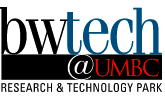
The head of a young Baltimore cyber security company says a New York investor nixed a deal after discovering Maryland’s new cyber security tax credit wouldn’t transfer to investors.
Suzanne Magee, CEO of Bandura LLC, said the credit should go to the investor. That’s how it works with the state’s biotech tax credit.
back to top 

Baltimore-area companies took home 12 percent of the money venture firms invested in the Baltimore-Washington, D.C., region in the second quarter.
Greater Baltimore companies raised a total of $29.5 million in venture capital during the period, according to a MoneyTree Report by PricewaterhouseCoopers and the National Venture Capital Association. Venture capitalists invested a total of $247.3 million in 58 companies in Baltimore and D.C. during the quarter.
back to top 

While the University of Virginia and Johns Hopkins can’t exactly compete with Ivy League Harvard when it comes to dominating the ranking of college rankings, the two D.C. area schools were ranked among the top 50 universities in the world by the Center for World University Rankings. Crushing other top-tier institutions like Dartmouth, Brown and McGill, the local academic titans nourishing the minds of students across the globe substantiated themselves as schools worth attending during a time of loan shark annihilation.
back to top 
President of the University of Maryland-Baltimore County since 1992, Freeman A.  Hrabowski III thinks he knows what students need: lots of support. Morally, colleges owe it to students to do everything possible to help them succeed, he said in a recent visit to The Chronicle, and a higher retention rate means more tuition dollars, too. Hrabowski III thinks he knows what students need: lots of support. Morally, colleges owe it to students to do everything possible to help them succeed, he said in a recent visit to The Chronicle, and a higher retention rate means more tuition dollars, too.
back to top 

Former state economic development secretary Aris Melissaratos is leaving Johns Hopkins University for a job where he’ll have more power.
Melissaratos, who had been with Hopkins for seven years, on July 17 joined Stevenson University as interim dean of the Brown School of Business and Leadership. Melissaratos said he has always had an interest in academia and now will be able to play a leading role in preparing students to join the local workforce.
back to top 

Venture investors in Silicon Valley are frequent prey of startup founders who spot them in public places — and semi-public places — and start pitching. Last night, a discussion about awkward pitches led four VCs on a panel for the Silicon Valley Business Journal’s annual Pitch event to tell tales from the mens room.
The consensus? There’s no good way to do it.
back to top 

That was my question when I spoke with DreamIt Health newbie BioBots, specifically co-founder Ricardo Solorzano. He has spent three years working on technology to develop low-cost 3D bioprinters that research scientists can use to develop biomaterials. The company was formed by a couple of University of Pennsylvania graduates They view it as a way to change the way people think of regenerative medicine.
Solorzano and fellow co-founder Danny Cabrera joined Hive 76 in Philadelphia so they could learn more about developing these 3D printers. They also work with intern Eric Wamakima. They spoke with MedCity News at DreamIt Health’s launch party for its second class
back to top 
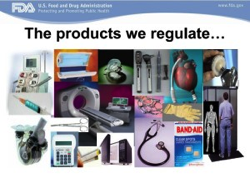
It’s tough for medical device companies to get that stamp of FDA approval, but the labyrinthine regulatory pathway certainly doesn’t help things. Regulators want to change that:
“…we learned that the delivery of new therapies to patients can be accelerated if medical device innovators — including entrepreneurs and university students and faculty — understand FDA’s regulatory processes,” FDA researcher Francis Kalush wrote recently.
back to top 

President Obama’s visit earlier this month to 1776, the startup hub in downtown Washington, D.C., shined a spotlight on entrepreneurship and innovative thinking nationwide. It was a good location because the contemporary, well-lit loft that incubates and supports area startups has grown from zero to 215 members in only a year-and-a-half.
The president’s visit highlighted two entrepreneurial stories, not only of 1776 but also of the early steps by American University involving its Masters of Arts in Media Entrepreneurship program (MAME) and two campus collaborators. We became the hub’s first university partnership in a fruitful relationship that could be repeated at other campuses across the country.
back to top 

The two-year anniversary of the monumental Supreme Court decision upholding the Affordable Care Act may not have caused much fanfare, but Steve Kraus, a partner at Bessemer Venture Partners, said Massachusetts should be celebrating.
Here are four takeaways from a conversation with the head of the firm’s health care investing, as he analyzes the shifts that have occurred in the two years since the Affordable Care Act was deemed constitutional.
back to top 

Many medical researchers with ideas not tied to a drug backed by the pharmaceutical industry often find themselves without funding; patients with diseases or other medical conditions, particularly those that are rare, are without much power. That is, until recently.
Now, scientists are turning to crowdfunding to launch their research. Donors won’t get a free CD, T-shirt or other giveaway like they do on Kickstarter. But what fundraisers give in return is hope for a treatment and at least insight into medical conditions.
back to top 
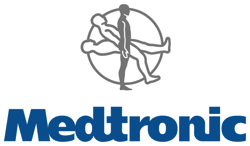
Paul Thompson, director of IT innovation at Medtronic, explained how he held on for four years to bring the “hospital of the future” to life. His work is part of the company’s larger push to move from a device maker to a healthcare services provider, which he compared to IBM’s move from hardware to services.
At the end of this session at CONVERGE, an audience member asked what metrics Thompson and his team must meet each year to be considered a success.
back to top 

DreamIt Ventures is kicking off its second health IT accelerator class in Philadelphia with a stronger life sciences theme than last year. More hospitals reviewed candidates this year and the result included four life sciences startups in its nine-member class. They take diverse approaches to the problems they solve — from molecular diagnostics to detect disease earlier to wound management.
It’s an interesting development because healthcare startup accelerators tend to stick to health IT and mobile health companies because it takes a shorter amount of time to develop products, there’s less risk and the path to getting FDA clearance can take a while. Although it’s not interested in therapeutics, DreamIt has definitely been warming up to medical technology that goes beyond health IT. One reason is that molecular diagnostics and 3D printing is increasingly accessible through mobile platforms.
back to top 

Stanford University scientists say they have developed a new test for type 1 diabetes that will cost a fraction of the current price and could speed up diagnosis from days to hours. That could be useful anywhere, but especially in poorer countries where many people with diabetes go undiagnosed or misdiagnosed because the existing tests are too expensive to be widely offered.
In current tests, blood samples are sent to a lab, where radioactive materials are used to detect the cause of the disease: a so-called auto-antibody that attacks the insulin-producing cells in the pancreas. This test is labor-intensive and costs hundreds of dollars.
back to top 
|
|
|



|
In This Issue
|
|
About BHI
BioHealth Innovation (BHI) is a regionally-oriented, private-public partnership functioning as an innovation intermediary focused on commercializing market-relevant biohealth innovations and increasing access to early-stage funding in Maryland.
|
|
|
|

August 14
1776

August 14
Smokey Glen Farm Barbequers

September 15-16
Sheraton Pentagon City

September 15
Various Locations
|
BioHealth Job Opportunities
|
Newsletter designed and distributed by:

|
|
|
 |
|
The information contained in this website and newsletters is for general information purposes only. The information is provided by BioHealth Innovation via its newsletters, but not written or endorsed in any way by BioHealth Innovation unless otherwise noted. While we endeavor to keep the information up to date and correct, we make no representations or warranties of any kind, express or implied, about the completeness, accuracy, reliability, suitability or availability with respect to the website or the information, products, services, or related graphics contained on the website for any purpose. Any reliance you place on such information is therefore strictly at your own risk.
|
|
|
|
|
|
|

Supernus Pharmaceuticals, Inc. (Nasdaq:SUPN), today announced the execution of a royalty acquisition agreement (“Agreement”) with HealthCare Royalty Partners (“HC Royalty”). Per the Agreement, HC Royalty will make a $30 million cash payment to Supernus in consideration for acquiring from Supernus certain royalty and milestone rights related to the commercialization of Orenitram(TM) (treprostinil) Extended-Release Tablets by Supernus’ partner United Therapeutics Corporation. Supernus will retain full ownership of the Royalty Rights after a certain threshold has been reached per the terms of the Agreement.
“We are pleased to have completed this royalty transaction, which strengthens our balance sheet and enhances our financial flexibility,” said Jack Khattar, President and Chief Executive Officer of Supernus. “The transaction allows us to partially monetize our royalty stream from Orenitram(TM) for a significant cash consideration while positioning Supernus to further benefit from the future upside potential of the product.”
back to top 

Healthcare Interactive Inc. — which sells Web-based software for companies to monitor medical costs in real time — has raised $8 million in funding.
The Series A funding in the Glenwood, Maryland-based company came from Grotech Ventures, which has more than $1.3 billion under management, and Harbert Venture Partners, an emerging growth-stage investor with $200 million under management.
back to top 

ORTHOMETRIX, INC. announced today that it has signed an exclusive agreement with ENCORE PATH, INC. to market, sell and service worldwide the Tailwind™ arm rehabilitation device. The Tailwind™ is a patented Bilateral Arm Trainer with Rhythmic Auditory Cueing (BATRAC) that was developed at the University of Maryland School of Medicine’s Department of Physical Therapy and Rehabilitation Services and licensed to Encore Path, Inc., a portfolio company of the New Ventures Department of the University of Maryland, Baltimore. The Tailwind has been shown to improve arm movement in stroke patients with paralysis. It will be initially marketed in Asia and in Israel, and then in the U.S. after a Centers for Medicare & Medicaid Services (CMS) HCPCS code is obtained for use of the Tailwind as a durable medical equipment (DME). Commenting on this agreement, Reynald Bonmati, Chairman and Chief Executive Officer of Orthometrix, stated, “I am very pleased to partner with Encore Path and the University of Maryland. The Tailwind™ for upper-limb rehabilitation of stroke patients is a natural addition to our SmartStep® Biofeedback system for lower-limb rehabilitation, developed and manufactured by our partner Andante Medical Devices, Inc. Orthometrix, Andante and Encore Path are currently working on the manufacturing of the Tailwind™ by Andante.
The Tailwind was developed by physicians from the University of Maryland specializing in physical therapy and rehabilitation after a decade of scientific research. Clinical studies have shown that the device helps improve arm mobility, function, and range of motion in patients with even severe paralysis. Representatives from the University of Maryland’s New Ventures Department facilitated the introduction of Encore Path, Inc. and Orthometrix, Inc. and the subsequent agreement. The University of Maryland Ventures is designed to fuel the growth of the University’s startups, particularly those based upon intellectual property developed by physicians at the University of Maryland, Baltimore and University of Maryland, College Park.
back to top 

Storrer will oversee strategy, expansion and operation of Strand Genomics Inc., the wholly owned subsidiary of Strand Life Sciences in North America. Strand is a leader in technology innovations for personalized medicine using genomics in over 2,000 clinical and research institutions worldwide. By enhancing sequence-based diagnostics and clinical genomic data interpretation using a strong foundation of computational, scientific, and medical expertise Strand is bringing individualized medicine to the world.
“We are excited to have Scott Storrer join our team,” said Dr. Vijay Chandru, Chairman and CEO of Strand. “Storrer’s twenty plus years of executive experience leading and growing profitable businesses in the U.S. healthcare industry across payer, provider and personalized medicine sectors will help develop a strong presence for Strand in North America.”
back to top 

New Enterprise Associates averaged a U.S. funding deal every three days in the first half of this year, the hottest six months for the industry since the end of the dotcom boom in 2001.
Not far behind NEA’s 64 first half deals were Kleiner Perkins Caufield & Byers (54), Andreessen Horowitz (52) and Google Ventures (50), according to a report from investment database research firm CB Insights.
back to top 

Take advantage of an incredible international business opportunity and explore the India market with Montgomery County Executive Leggett during a business mission to India this November!
Sign up now to join Leggett and fellow business, educational and community leaders for engaging stops in New Delhi, Bangalore, Hyderabad and Raipour. August 1st is the deadline to apply for ExportMD grant funds to help defray the cost of participation in the m
back to top 

Johns Hopkins University is expected to receive almost $6.4 million from the federal health department for a support program for people with dementia. The award, worth up to $6.38 million, is part of the federal Centers for Medicare and Medicaid Services’ Health Care Innovation Awards.
The award is contingent on final administrative approval by the federal health department.
back to top 

Maryland has one of the Top 10 best-buy colleges and universities, according to the 2015 edition of Fisk’s Guide to Colleges.
The University of Maryland, Baltimore County ranked No. 9 out of 44 schools in the U.S., United Kingdom and Canada.
back to top 

The Frederick Innovative Technology Center Inc. is looking for business leaders to volunteer for its board of directors.
Preference will be given to those in private industry in the fields of life sciences, advance technology, finance, marketing and entrepreneur. The board meets the fourth Monday of each month.
back to top 

Alexandria-based venture capital firm Columbia Capital is planning a $425 million fund according to SEC filings reported in the Washington Business Journal. The firm invests in information technology, especially infrastructure, wireless spectrum and other related fields. It’s done plenty of investing around D.C. in the quarter century since it was founded. Millennial Media, Broadsoft, Virtustream and Summit IG are all on the list of local companies invested in.
Not that Columbia limits itself geographically. It led a $23 million round of funding for Seattle-based 2nd Watch in November. According to WBJ, it even occasionally builds a company from scratch to satisfy some IT need, like Cloud Sherpas, which provides enterprise cloud-based services. Whether or not that will be the path Columbia takes this time remains to be seen, but it’s certainly not out of the realm of possibility that the fund is being raised for creation rather than strictly investment.
back to top 

Funding and Research Opportunities
The following funding opportunity announcements from the NHLBI or other components of the National Institutes of Health, might be of interest:
NIH Guide Notice:
- NIH Announces Change in Policy Requirements for Activation Notices for Fellows Sponsored by Foreign and Federal Institutions
(NOT-OD-14-101) National Institutes of Health
- Notice of Correction to Budget Instructions for PA-14-042 “NIH Pathway to Independence Award (Parent K99/R00)”
(NOT-OD-14-102) National Institutes of Health
- Request for Information: Collaborative Translational Research Consortium to Develop T4 Translation of Evidence-based Interventions
(NOT-HL-14-028) National Heart, Lung, and Blood Institute
Please note that most links to RFAs, PAs, and Guide Notices will take you to the NIH Web site. RFPs will take you to FedBizOpps. Links to RFPs will not work past their proposal receipt date. Archived versions of RFPs posted on FedBizOpps can be found on the FedBizOpps site using the FedBizOpps search function. Under “Document to Search,” select Archived Documents.
back to top 

Date: Monday, September 22, 2014
Location: North Carolina Biotechnology Center 15 TW Alexander Drive Research Triangle Park, NC 27709-3547 http://www.ncbiotech.org/
Background:
NHLBI’s Office of Translational Alliances and Coordination (OTAC) hosts this semi-annual Regional Innovation Conference that brings together small businesses, angel investors, venture capitalists, strategic partners, and business leaders from the biotech and pharmaceutical industries. NHLBI staff will be available to describe the details and impact of recent changes in the Federal SBIR/STTR program, as well as note other funding opportunities and resources for NHLBI small businesses.
Previous conferences have been held in Boston, MA, San Francisco, CA, San Diego, CA, and Rockville, MD.
back to top 

Founder salaries
Q.: Is it okay to pay yourself (and other founders) a salary when you’ve only raised money from friends and family? If so, how much is reasonable? What’s an acceptable salary to pay yourself once a non-family seed round is raised?
back to top 

The Tech Council of Maryland hopes a new office at the University of Maryland BioPark will help the organization play a bigger role in technology and life sciences in Baltimore.
Much of the tech council’s activities are centered in Montgomery County, where the organization’s headquarters and many of its members are based. The tech council will open a new office at the biopark and staff it every Thursday. The Baltimore office will focus on strengthening partnerships with other technology organizations in the city and developing new programs that meet needs of Baltimore-area companies.
back to top 

More than 70 percent of college graduates with a bachelor’s degree in science, technology, engineering and mathematics are not employed in those industries.
About 74 percent of STEM college graduates hold jobs unrelated to their fields of study, according to U.S. Census Bureau data. And those who are working in STEM fields are predominantly male. Specifically, Census data shows more than 80 percent of engineers and more than 70 percent of computer professionals are men.
back to top 
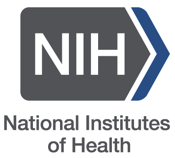
Happy 10th anniversary to the National Institutes of Health’s Common Fund! It’s hard to believe that it’s been a decade since I joined then-NIH Director Elias Zerhouni at the National Press Club to launch this trans-NIH effort to catalyze innovation and speed progress across many fields of biomedical research.
Allow me to take this opportunity to share just a bit of the history and a few of the many achievements of this bold new approach to the support of science.
back to top 

It’s still a good time to go public.
Twenty-eight venture-backed companies completed initial public offerings during the second quarter, raising $4.9 billion. That was a 45 percent increase in dollars raised compared to the previous quarter, according to an analysis by Thomson Reuters and the National Venture Capital Association. It was the fifth consecutive quarter of more than 20 IPOs at venture-backed companies.
back to top 

In biotech’s early days, telling a story to a wide audience used to be part of the path to success. Founders would share a compelling early narrative to potential investors, reporters, and just about anyone else who would listen. Nature papers were the coin of the realm.
But far from shouting to the rooftops, lately it seems that more and more biotechs are pursuing a different approach. Instead of keeping their technology under wraps until a first financing happens, these companies go into what we call “permanent stealth mode.” The principle here seems to be, “say no more publicly than necessary, and even then, keep it vague.” Meantime, let your actions speak for you: Raise money. Sign partnerships with pharmaceutical companies. And then, seemingly out of nowhere, hand consumers and investors a finished product or service.
back to top 
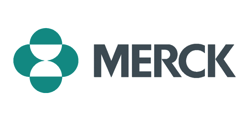
On a recent tour of the latest addition to University City Science Center’s campus in Philadelphia – an innovation hub in an established building on its campus set to officially open next week — I unexpectedly came across an office belonging to Merck.
It’s all the more interesting because it’s just a few doors down from DreamIt Ventures and its accelerator DreamIt Health, which has a second class of health IT entrepreneurs moving in next week. The Science Center’s own digital health accelerator will also be working in the building.
back to top 

The 4th edition of the Orphan Drugs Summit, Northern Europe’s premier orphan drugs conference, will take place in Copenhagen, Denmark this September.
As the conference approaches it is becoming more obvious that collaboration is one of the most important driving forces in the development of orphan drugs. The Orphan Drugs Summit will focus on how to build relationships on multiple levels, highlight how to access partnership parallel advice, and will also outline how stakeholders can benefit from collaboration to develop stronger clinical trials.
back to top 

Healthcare startups, and all startups for that matter, need investors and funding to stay alive. For this reason, MedCity is pleased to announce that investor Andrew Jay, MD, will be speaking at CONVERGE. Dr. Jay is the head of the medical solutions fund at HealthCare Fund at Siemens Venture Capital, which invests in companies focusing on imaging, diagnostics and health IT.
Jay will be speaking on the second day of MedCity CONVERGE at 9:20 a.m. The third annual CONVERGE is July 15-16 in Philadelphia.
back to top 

Two private equity firms announced the formation of a $26.6 million fund that will focus exclusively on the aging marketplace and companies within it.
Chicago-based Ziegler and Ohio-based Link-age Ventures announced the close of the Longevity Fund, which aims to address a number of key issues affecting seniors. Among them: coordination of care, chronic disease management, reducing hospitalizations and re-admissions, disease prevention and wellness, aging and government funded programs and public health issues, according to the companies.
back to top 
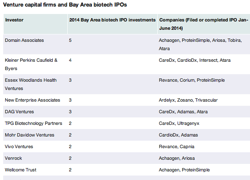
A cadre of venture capital firms could cash in from the wave of Bay Area biotech initial public offerings in the first half of the year.
Stalwart VCs such as Kleiner Perkins Caufield & Byers of Menlo Park and Domain Associates are among the venture capital firms whose names pop up most often in the IPOs of local life sciences companies through June. Among the other VCs are DAG Ventures of Palo Alto and Essex Woodlands Health Ventures in Palo Alto.
back to top 

Personalized medicine (PMx), medical treatment tailored to specific patient populations based on their genetic or molecular biology profiles, has long been heralded as the next big thing in healthcare. It’s been about 16 years since Genentech launched Herceptin, a drug for breast cancer patients with a specific genetic mutation. At the time, Herceptin seemed to usher in a revolution for how drugs would be developed and patients would be cured.
In that new version of care, drugs could be tailored to a patient’s specific biochemical profile, dramatically improving efficacy rates and reducing the system-wide costs and complications associated with one-size-fits-all medications. For pharmaceutical manufacturers, this approach had the potential to improve sales and profits through a radically new business model: differentiated products for segmented populations (see “A Strategist’s Guide to Personalized Medicine,” by Avi Kulkarni and Nelia Padilla McGreevy, s+b, Winter 2012).
back to top 
|
|
|



|
In This Issue
|
|
About BHI
BioHealth Innovation (BHI) is a regionally-oriented, private-public partnership functioning as an innovation intermediary focused on commercializing market-relevant biohealth innovations and increasing access to early-stage funding in Maryland.
|
|
|
|

July 17
Roof Bethesda

August 14
1776

August 14
Smokey Glen Farm Barbequers

September 15-16
Sheraton Pentagon City

September 15
Various Locations
|
BioHealth Job Opportunities
|
Newsletter designed and distributed by:

|
|
|
 |
|
The information contained in this website and newsletters is for general information purposes only. The information is provided by BioHealth Innovation via its newsletters, but not written or endorsed in any way by BioHealth Innovation unless otherwise noted. While we endeavor to keep the information up to date and correct, we make no representations or warranties of any kind, express or implied, about the completeness, accuracy, reliability, suitability or availability with respect to the website or the information, products, services, or related graphics contained on the website for any purpose. Any reliance you place on such information is therefore strictly at your own risk.
|
|
|
|
|
|
|
 BioHealth Innovation, Inc. (BHI), a regional private-public partnership focusing on commercializing market-relevant biohealth innovations and increasing access to early-stage funding in Central Maryland, today announced the launch of a new service offering: the Startup Package for Client Companies. The new package is designed to provide early-stage biohealth companies in Central Maryland with access to critical professional services – including corporate legal guidance, intellectual property, banking, accounting, payer and strategy, and grant support – as an enhanced benefit to working with BHI. BioHealth Innovation, Inc. (BHI), a regional private-public partnership focusing on commercializing market-relevant biohealth innovations and increasing access to early-stage funding in Central Maryland, today announced the launch of a new service offering: the Startup Package for Client Companies. The new package is designed to provide early-stage biohealth companies in Central Maryland with access to critical professional services – including corporate legal guidance, intellectual property, banking, accounting, payer and strategy, and grant support – as an enhanced benefit to working with BHI.
“We are proud to offer this service to our startup clients seeking to commercialize biohealth products,” said Richard Bendis, President & CEO. “BHI aims to facilitate the development of commercially viable health-related products and companies. Providing access to these professional services is a critical step towards helping our biohealth startup clients in achieving this goal.”
BHI has partnered with a supporting network of professional service providers that share the same vision for growing Maryland’s biohealth sector, including Venable LLP, M&T Bank, Aronson, Miles & Stockbridge, InHouse Patent Counsel, Science Sherpa, Center for Medical Technology Policy, ADVI, and BBC Entrepreneurial Training & Consulting. These firms understand the nature and needs of startup companies, and offer preferred rates for client companies.
back to top 

Rockville biotechnology company Cellphire is the latest receipient of funding via the State’s InvestMaryland program, receiving $1 million last month!
Cellphire is developing stabilized cellular products, including freeze-dried platelets that can be stored for years and used in a range of advanced therapeutic and diagnostic applications including sports medicine, plastic surgery and dentistry. The company received a contract last year worth up to $57 million from the Biomedical Advanced Research Defense Authority, a division of U.S. Department of Health & Human Services. The InvestMaryland funding will be used to continue development of the company’s freeze-dried platelet product, Thrombosomes, and move it closer to winning FDA approval.
back to top 

GSK and Save the Children have announced the second annual $1 million Healthcare Innovation Award, which was established to identify and reward innovations in healthcare that have proven successful in reducing child deaths in developing countries.
Organizations from across the developing world can nominate examples of innovative healthcare approaches they have discovered or implemented. These approaches must have resulted in tangible improvements to under-5 child survival rates, be sustainable and have the potential to be scaled-up and replicated. Special attention will be given to work that aims to increase the quality of, or access to, healthcare for newborns.
back to top 

Take a break from the Summer heat with our sponsor, Hydro Service and Supplies, and join us for another great networking event on July 9th from 5:00 – 7:30 p.m. at American Tap Room in Rockville, MD. This location is a short walk from the Metro located in the Rockville Town Center.
Hydro Service and Supplies, Inc. provides a versatile range of quality ultrapure water systems and products, from large scale central production systems to point-of-use laboratory systems. Since 1967, Hydro has been an industry leader by combining synergistic engineering and innovative designs with high-performance component selections, superior materials of construction, and precision manufacturing that result in high quality ultrapure water systems.
Hydro is dedicated to providing quality products and professional support from our experienced sales, engineering and service teams. Hydro serves Pharmaceutical, Biotech, Microelectronic, Research, Academic, Medical/Clinical, Food and Beverage, and Industrial applications. In addition, Hydro offers engineering services, turn-key installation, start-up and commissioning, validation support, PLC programming, water testing services and reliable service support 24/7/365.
back to top 

Originating as a solution to educate health workers in developing countries, emocha is now a powerful platform that allows researchers and clinicians to use mobile data capture, health education, and communication to address the challenges of adherence, linkage to care, and patient data management across a myriad of use cases. Sebastian Seiguer, CEO and Founder of emocha, and Morad Elmi, Director of Marketing, spoke with us about the latest from this Baltimore-based startup.
back to top 

Two Montgomery County companies each took home the top prize of $100,000 in their category as part of the 2014 InvestMaryland Challenge.
Bethesda-based life sciences company, Brain Sentry, won for its helmet-mounted sensor used to identify team sport players who should be evaluated for a concussion. Gaithersburg-based IT company, ClickMedix, won its catergory for technology aimed at helping physicians and health organizations maximize the number of patients they are able to serve.
back to top 

Funding and Research Opportunities
The following funding opportunity announcements from the NHLBI or other components of the National Institutes of Health, might be of interest:
NIH Guide Notice:
- Notice of CDC/NCCDPHP Participation in PA-14-071 “PHS 2014-02 Omnibus Solicitation of the NIH, CDC, FDA and ACF for Small Business Innovation Research Grant Applications (Parent SBIR [R43/R44])”
(NOT-CD-14-001)
Centers for Disease Control and Prevention
National Center for Chronic Disease Prevention and Health Promotion
- Notice of Website for Frequently Asked Questions (FAQs) for PAR-13-231 “Phenotyping Embryonic Lethal Knockout Mice (R01)”
(NOT-HD-14-021)
Eunice Kennedy Shriver National Institute of Child Health and Human Development
Requests for Applications:
- Enriching the Hematology Research Workforce through Short-term Educational Experiences in Emerging Science Research Education Program Grant (R25)
(RFA-HL-15-006)
National Heart, Lung, and Blood Institute
Application Receipt Date(s): October 13, 2014
Please note that most links to RFAs, PAs, and Guide Notices will take you to the NIH Web site. RFPs will take you to FedBizOpps. Links to RFPs will not work past their proposal receipt date. Archived versions of RFPs posted on FedBizOpps can be found on the FedBizOpps site using the FedBizOpps search function. Under “Document to Search,” select Archived Documents.
back to top 

Leslie Ford Weber, interim executive director of Johns Hopkins University’s Montgomery County Campus, has been appointed to a board of directors executive committee position with the Montgomery County Chamber of Commerce.
Weber will serve a yearlong term as vice chair of the economic development committee. She shares the responsibility with Stewart Edelstein, executive director at the Universities at Shady Grove.
back to top 

The Johns Hopkins University has joined the National Science Foundation‘s National Innovation Network and becomes the fourth member university in the NSF Innovation Corps regional collaboration led by the University of Maryland, along with the George Washington University and Virginia Tech.
The NSF has approved a request from the three original universities to officially include Johns Hopkins in the I-Corps program’s “node” in the Mid-Atlantic called DC I-Corps, which was formed last year with $3.75 million in NSF funding.
back to top 

University of Maryland, a national leader in entrepreneurship education and venture creation, announces it will offer a new master’s degree program in technology entrepreneurship starting this fall.
The 30-credit, 15-month Master of Technology Entrepreneurship, available online to current and aspiring entrepreneurs worldwide, features the university’s most advanced and comprehensive entrepreneurship curriculum to date, taking students from concept development and prototyping to business model generation and customer validation, as well as legal aspects of entrepreneurship, financial and innovation management, and effective growth strategies.
back to top 

Former Johns Hopkins University college student Alex Koren wants to make a difference.
Koren feels he has a better opportunity of doing that by dropping out of Johns Hopkins, and devoting all of his time to his ideas on a Thiel Fellowship.
back to top 
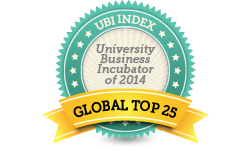
On June 24, UBI Index announced the Global Top 25 University Business Incubators of 2014. We would like to thank all participants of this year’s benchmark for great efforts in supporting entrepreneurs and helping the industry understand the importance of incubation.
back to top 

Valuations on venture-backed companies jumped again in the second quarter as the number of IPOs and the amount VCs invested in startups both hit post-dot-com highs, a new report from PitchBook Data shows.
The total amount invested has climbed steadily each quarter in the past year, jumping from $12.8 billion in Q2 of 2013 to $21.5 billion in the same period this year. The $13.9 billion raised in 76 new venture funds is also a recent high.
back to top 

A survey of healthcare and life science professionals and investors suggests healthcare M&A activity will surge past 2013 levels when there were 394 deals valued at $97 billion. The report by Bass Berry & Sims and Mergermarket indicates that market disruption, brought on by the Affordable Care Act, will lead to more consolidation deals across healthcare facilities, life science and healthcare IT companies.
The Affordable Care Act and HITECH Act are etched into the heart of most of these deals. That’s apparent from the facilities trying to figure out ways to cope with reduced Medicare reimbursements to the technology hospitals will need to adopt to fit in with change in payment models in the future. They also need to comply with electronic medical record requirements. Here are six trends that illustrate and factor in to the survey’s outlook.
back to top 

Educational experts have been telling us the future of employment opportunity will be in jobs requiring science, technology, engineering or mathematics training. At least in the D.C. area, the future is now.
A new study from the Brookings Institution finds the majority (55.1 percent) of job postings in the Washington area in the first quarter of 2013 required STEM skills. And not rudimentary skills either. More than 48 percent of all job postings required STEM skills and at least a bachelor’s degree.
back to top 

Anyone who wants a job next year at Anne Arundel Medical Center — whether as a surgeon or security guard — will have to prove they don’t smoke or use tobacco.
The Annapolis hospital’s new hiring policy might be controversial, but it is legal in Maryland and more than half of the United States. And it’s a type of job screening that is gaining favor with employers — from hospitals to companies such as Alaska Airlines — trying to control rising health costs and cultivate a healthier, more productive workforce.
back to top 

Reston-based New Atlantic Ventures joined a handful of other venture investors in backing Truveris, a New York startup whose cloud-based platform helps drive down the cost to companies of providing prescription drug benefits.
NAV Fund, an existing investor, joined New Leaf Venture Partners, Tribeca Venture Partners and First Round in Truveris’ $12.75 million Series C round, which was led by Canaan Partners.
back to top 

The heart is more forgiving than you may think — especially to adults who try to take charge of their health, a new Northwestern Medicine® study has found.
When adults in their 30s and 40s decide to drop unhealthy habits that are harmful to their heart and embrace healthy lifestyle changes, they can control and potentially even reverse the natural progression of coronary artery disease, scientists found.
back to top 
|
|
|



|
In This Issue
|
|
About BHI
BioHealth Innovation (BHI) is a regionally-oriented, private-public partnership functioning as an innovation intermediary focused on commercializing market-relevant biohealth innovations and increasing access to early-stage funding in Maryland.
|
|
|
|

July 8
Planet Fitness

July 8
Johns Hopkins University Montgomery County Campus

July 17
Roof Bethesda

August 14
1776

August 14
Smokey Glen Farm Barbequers
|
BioHealth Job Opportunities
|
Newsletter designed and distributed by:

|
|
|
 |
|
The information contained in this website and newsletters is for general information purposes only. The information is provided by BioHealth Innovation via its newsletters, but not written or endorsed in any way by BioHealth Innovation unless otherwise noted. While we endeavor to keep the information up to date and correct, we make no representations or warranties of any kind, express or implied, about the completeness, accuracy, reliability, suitability or availability with respect to the website or the information, products, services, or related graphics contained on the website for any purpose. Any reliance you place on such information is therefore strictly at your own risk.
|
|
|
|
|
|
|

Scientific excellence is an integral part of any pharmaceutical company’s success. By paying attention to staff training and development at all levels, it is possible to embed vital life-long skills and behaviours into the scientists and professionals responsible for discovering and developing new medicines to treat patients.
MedImmune is the global biologics R&D arm of AstraZeneca and is committed to scientific innovation and medical progress. Our state-of-the-art facilities at Granta Park are home to over 550 members of the 2,500-strong global MedImmune team. To support its ambitions to help save lives and improve people’s health, MedImmune works hard to ensure that all employees, across all functions, are given the training they need to excel in their roles and work alongside their colleagues. MedImmune’s Cambridge site is therefore very pleased that it has recently been awarded Gold Standard Status for Training in Life Sciences by Cogent, the organisation responsible for skills in the life sciences sector and connected to government policies in this area.
back to top 

Emergent BioSolutions Inc. – Product Pipeline Review – 2014 is a new market research publication announced by Reportstack. This report provides an overview of the Emergent BioSolutions Inc.’s pharmaceutical research and development focus.
This report provides comprehensive information on the current therapeutic developmental pipeline of Emergent BioSolutions Inc.’s, complete with comparative analysis at various stages, therapeutics assessment by drug target, mechanism of action (MoA), route of administration (RoA) and molecule type. It also reviews latest updates, and featured news and press releases, along with special features on late-stage and discontinued projects.
back to top 

GSK and Save the Children have announced the second annual $1 million Healthcare Innovation Award, which was established to identify and reward innovations in healthcare that have proven successful in reducing child deaths in developing countries.
Organizations from across the developing world can nominate examples of innovative healthcare approaches they have discovered or implemented. These approaches must have resulted in tangible improvements to under-5 child survival rates, be sustainable and have the potential to be scaled-up and replicated. Special attention will be given to work that aims to increase the quality of, or access to, healthcare for newborns.
back to top 

Johns Hopkins University is one of eight Baltimore universities and hospitals that today joined Mayor Stephanie Rawlings-Blake to sign a pledge to work together to grow and revitalize the city and to help solve some of its most pressing challenges.
The Baltimore City Anchor Plan targets four priority areas—public safety, local hiring, local purchasing, and quality of life in the city. In a memo introducing the plan, Rawlings-Blake said that the signing institutions, which are among the city’s largest employers, are integral to her goals of attracting new families to Baltimore and increasing jobs and investment.
back to top 

The BioMaryland Center is pairing up with a French life science organization to support a business venture between two companies.
BioMaryland and Medicen Paris Region will each invest $200,000 in a commercialization project between Opticul Diagnostics in Rockville and the French company Diafir. Each company will also put $200,000 toward the project for a total investment of $800,000.
back to top 

The University of Maryland School of Medicine’s Maryland Psychiatric Research Center (MPRC), a research center in the School’s Department of Psychiatry, was awarded a $10.7 million grant from the National Institutes of Health (NIH) to establish a Silvio O. Conte Neuroscience Research Center that will examine the causes of schizophrenia and search for possible new treatments. Schizophrenia is a devastating psychiatric disease, affecting one percent of people worldwide. Although its roots have been traced to abnormal early brain development, the cause remains a mystery, and current treatments are limited.
The five-year NIH grant*, one of only two awarded this year nationwide, will enable researchers to conduct breakthrough research, combining laboratory and clinical studies of a key chemical called kynurenic acid, a major breakdown product of the amino acid tryptophan. Kynurenic acid levels are increased in the brain of individuals with schizophrenia, and appear to contribute especially to the cognitive abnormalities, which are core symptoms of the disease and a major reason for the inability of people with the disorder to lead productive and fulfilling lives.
back to top 

The A. James Clark School of Engineering and the Maryland Technology Enterprise Institute (Mtech), an international leader in technology entrepreneurship education and venture creation, seeks a teaching faculty member to join its award-winning team.
Leveraging their experiences in technology entrepreneurship, the faculty member will teach approximately five courses per year, with an emphasis on undergraduates. Key topics may include customer discovery, marketing strategy, new product design and development, design for manufacturing, industrial design, concurrent engineering, and/or market development and commercialization.
The lecturer will be expected to use innovative teaching approaches to include collaborative learning, project based learning, flipped classroom, online learning, and civic engagement. This person will play an active role in collaborating with student entrepreneurs to launch new ventures.
back to top 

Whenever Baltimore-area companies sell themselves to out-of-state firms, economists and local leaders alike bemoan the loss. Another headquarters gone. Fewer corporate decision-makers here. Possible job cuts.
But Silicon Valley’s deals for two Columbia firms — the planned Micros Systems acquisition, announced last week, and Sourcefire last year — strike local entrepreneurs in an entirely different way.
back to top 

Maryland has a new strategy for growing biotechnology business: Roll out the welcome mat for international companies.
International bio companies looking to break into the American market must first get approval from the U.S. Food and Drug Administration. The FDA regulates medical devices and drugs. The approval process can be complicated even for American companies that are somewhat familiar with the agency.
back to top 

Today, Under Armour (NYSE:UA), the global leader in sports performance and innovation, announced plans for the 2014 Under Armour Future Show: The Connected Fitness Innovation Challenge, which asks innovators to submit concepts for the next generation of game-changing digital experiences, through apps and wearable technology, while utilizing the MapMyFitness software. Finalists will present their concepts to the Brand’s executive team in October, 2014 at Under Armour’s global headquarters in Baltimore, MD for a chance to win the Grand Prize of $50,000. Winners may then be eligible for an additional investment of up to $150,000. Innovators can now submit their ideas and innovations at idea.underarmour.com for consideration.
Entering its fourth year, Under Armour’s Future Show rewards the Brand’s innovation-inspired consumer base, incentivizing them to design new products that align with the Brand’s forward-thinking vision. The 2014 Future Show will identify the most creative minds in engineering and software development who can implement wearable, wireless and embedded apparel-based technology addressing one or more of the following needs: fitness assessment and training, readiness and recovery, sleep analysis or other novel usages that will help make athletes better.
back to top 

Cyber entrepreneur Mike Binko is launching a second Innovation Sandbox to give exposure to small startup companies.
The program will connect health care, medical and life science organizations with small vendors that are interested in working with the health care sector, said Binko, CEO of cloud services provider Kloudtrack.
back to top 
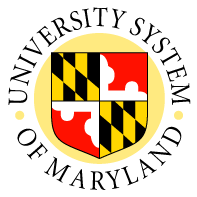
Kyushu University and the University System of Maryland exchanged memorandums of understanding on Tuesday to work together on cybersecurity education and research. It will be the first cooperation between a Japanese and U.S. university in the area of cybersecurity.
Setsuo Arikawa, the president of Kyushu University, visited Maryland to sign the memorandums with William Kirwan, the chancellor of the University System of Maryland, to create a partnership with the University of Maryland, Baltimore County.
back to top 

Johns Hopkins University affiliate Jhpiego has been awarded a five-year, $500 million contract to lead a federal global health program.
The Baltimore nonprofit organization will lead the Maternal and Child Survival Program, which targets preventable maternal and child deaths in 24 countries in Africa, Asia, the Caribbean and the Middle East that have the highest mother and child death rates. The award is from the U.S. Agency for International Development (USAID).
back to top 

ATCC, the premier global biological materials resource and standards organization, has licensed technology from the Centers for Disease Control and Prevention (CDC) and partnered with Thermo Fisher Scientific to bring a rapid and cost-effective PCR-based method of monitoring HIV drug resistance to resource-limited countries. The ATCC® HIV-1 Drug Resistance Genotyping Kit was optimized for off-the-shelf detection, sequencing, and genotyping of HIV-1 genomic mutations more commonly observed in resource-limited countries, and was attuned to sample collection methods most often employed in developing countries, including dried blood spots. Together, with ongoing CDC programs to train scientists in geographically dispersed regions, such as Sub-Saharan Africa, Central America, and Southeast Asia, this collaboration serves to advance applied public health initiatives to understand the growing problem of HIV drug resistance and, ultimately, improve patient outcomes.
One of the most difficult aspects of supporting resource-limited countries with temperature-sensitive reagents is being able to supply materials under stable conditions. This challenge was addressed by ATCC’s long-standing history and expertise in global cold-chain distribution of biological materials routinely used in research to further advances in human health. “Researchers around the globe rely on ATCC as the leader in the production and distribution of reagents for diseases that impact the world, such as influenza, tuberculosis, and malaria,” said Dr. Ted Mullins, Program Manager for ATCC Biological Services. “The release of these kits to World Health Organization designated and CDC-supported PEPFAR (President’s Emergency Plan for AIDS Relief) genotyping labs for the surveillance of drug resistance in HIV patients demonstrates yet another facet of our commitment to improving global health.”
back to top 

A few years ago, the Maryland legislature appointed a panel to assess the way it was funding higher education. As part of its scope, the panel evaluated the funding needs of the state’s historically black colleges and universities (HBCUs), paying particular attention to the research infrastructure needs at Morgan State University, which in 2005 had received the coveted Carnegie designation of “Doctoral Research University” without any additional infusion of state resources. It achieved this designation because it annually awarded the requisite number of doctoral degrees and received sufficient external federal research funding to qualify.
The state’s study found that unlike the University System of Maryland research campuses in College Park and Baltimore city and county, Morgan lacked most of the infrastructure components typically found at campuses with a research university label. Morgan’s faculty has much higher than average teaching loads, and its research laboratory space and equipment were inadequate. The study concluded that an investment in Morgan’s research platform would be required to allow it to adequately compete with research campuses with better developed infrastructures. But while state investment in capital facilities at Morgan has improved, its investment in enhancing Morgan’s research mission has not.
back to top 

Potential medical breakthroughs now being developed in Maryland, the fourth largest biopharma cluster in the U.S., will be the focus of the BioMaryland booth at BIO International 2014 at the San Diego Convention Center this week. The innovations range from a surgical tool that can speed and enable heart operations for patients who currently are not candidates for traditional open heart surgery to a simple diagnostic test to reduce the spread of malaria.
The following companies will be presenting their work and research at BIO International on Tuesday:
back to top 

Niall O’Donnell fancies himself an archaeologist of the pharmaceutical persuasion. His firm, RiverVest Ventures, is scoping out the failed and forgotten drugs of big pharma, building companies to repurpose these benched meds for new indications.
The aim is to find drugs that have passed for safety in clinical trials, but may have shown limited efficacy in the initial disease they aimed to treat.
back to top 

After stepping up their R&D spending last year, biotechnology companies worldwide must deploy that capital to create more value from their research, EY concluded in this year’s 28th annual edition of its industry report, released Tuesday at the Biotechnology Industry Organization (BIO)’s 2014 International Convention in San Diego.
Beyond Borders: Unlocking Value focused on three strategies for creating more value—“Adaptive” clinical trials that allow biotechs to tweak their hypotheses and shift R&D spending based on clinical data; “Precision medicine” that identifies patient subgroups most likely to benefit from a new therapy; and cross-industry collaborations during precompetitive phases, spearheaded by big pharma.
back to top 

May 18 was a glorious Sunday in the Boston area. Tens of thousands of families and friends descended on one of the nation’s best-known education corridors to celebrate the class of 2014. My husband and I were among the happy crowds joined by my family from Shanghai for our son Andrew’s graduation from Tufts University.
We fully immersed ourselves in the joy of gathering, cheering, listening, reflecting and photo snapping—including some selfies. Our weekend of celebration culminated with Andrew’s commencement speech on behalf of the Sociology Department. In a mother’s unbiased opinion, his 5-minute speech was brilliant, perceptive, and entertaining, an affirmation of the value of his college education in shaping his outlook on self and the society. Surrounded by family, I cheered and laughed as I listened to him. It was a moment of pure joy and pride that no other accomplishments of my own could possibly match.
back to top 

BIO BizLink is an online platform that connects life sciences companies with an unparalleled community of pre-clinical and clinical R&D service vendors
BIO BizLink is a portal to an unparalleled community of R&D vendors – including pre-clinical and clinical Contract Research Organizations (CROs), Contract Manufacturing Organizations (CMOs), and regulatory consultants – and a platform to take the administrative hassle out of RFP, vendor, and project management.
User on the platform can explore the community to find specific services and expertise; review company profiles and key personnel; start conversations about prior experiences; invite vendors to submit proposals; and execute confidentiality agreements. BIO BizLink was developed and launched as a cooperative effort among BIO, its State and Regional Affiliates and OnDeckBiotech.
back to top 

Healthbox, a leading business accelerator focused on healthcare technology and technology-enabled companies, today confirmed it is taking its accelerator program to Salt Lake City this August. Through partnerships with innovative organizations Intermountain Healthcare and HealthEquity, in addition to Zion’s Bank and BD (Becton, Dickinson and Company), Healthbox is sourcing companies, regardless of development stage, that meet the needs of a rapidly changing healthcare industry. The companies selected for the 16-week program will have unique access to Healthbox strategic partners, gaining an understanding of the key challenges plaguing these organizations and how to adapt their solutions to truly solve these challenges.
“We are thrilled to expand to Salt Lake City and build relationships with the local community. Utah has one of the fastest growing economies, and we believe there is a large opportunity to elevate the recognition of the area’s talented healthcare entrepreneurs,” says Nina Nashif, founder and CEO of Healthbox. “As Healthbox continues to grow, it is important that we commit to communities with both strong local health economies and an interest in advancing innovation.”
back to top 

Reston-based New Atlantic Ventures joined a handful of other venture investors in backing Truveris, a New York startup whose cloud-based platform helps drive down the cost to companies of providing prescription drug benefits.
NAV Fund, an existing investor, joined New Leaf Venture Partners, Tribeca Venture Partners and First Round in Truveris’ $12.75 million Series C round, which was led by Canaan Partners.
back to top 
|
|
|



|
In This Issue
|
|
About BHI
BioHealth Innovation (BHI) is a regionally-oriented, private-public partnership functioning as an innovation intermediary focused on commercializing market-relevant biohealth innovations and increasing access to early-stage funding in Maryland.
|
|
|
|

July 8
Johns Hopkins University Montgomery County Campus

September 15-16
Sheraton Pentagon City

September 15
Various Locations
|
BioHealth Job Opportunities
|
Newsletter designed and distributed by:

|
|
|
 |
|
The information contained in this website and newsletters is for general information purposes only. The information is provided by BioHealth Innovation via its newsletters, but not written or endorsed in any way by BioHealth Innovation unless otherwise noted. While we endeavor to keep the information up to date and correct, we make no representations or warranties of any kind, express or implied, about the completeness, accuracy, reliability, suitability or availability with respect to the website or the information, products, services, or related graphics contained on the website for any purpose. Any reliance you place on such information is therefore strictly at your own risk.
|
|
|
|
|
|
|

Richard Bendis and BioHealth Innovation were among the small businesses and individuals honored by the US Small Business Administration at the 2014 Tibbetts awards. Winners of the award have been critical in supporting the SBIR/STTR program in many different ways and are at the forefront of driving innovation. Read the full PR Newswire press release here.
The BHI SBIR/STTR Federal Funding Assistance Program offers biohealth companies support in preparing applications for federal funding inclusive of SBIRs, STTRs, and other federal government awards. Companies submit their federal funding concepts and receive pre-proposal feedback to help troubleshoot and strengthen your application. Further support from professional consultants and service providers is available to assist in improving your application.
For more information on the program, contact Ethan Byler.
back to top 

Governor Martin O’Malley and The Maryland Department of Business and Economic Development announced today that Cellphire, a Rockville biotechnology company, has received a $1 million investment through the State’s InvestMaryland program. Cellphire is developing stabilized cellular products, including freeze-dried platelets that can be stored for years, for use in a range of advanced therapeutic and diagnostic applications.
“Supporting entrepreneurs and innovators like those at Cellphire is a central piece of Maryland’s broad support of the startups and small businesses that move our Innovation Economy forward and keep our State competitive in the 21st Century,” said Governor O’Malley. “Maryland is a center of healing and discovery. The technology being developed by Cellphire has the potential to improve care and save lives around the globe.”
back to top 

Cambridge UK medical technology heavyweights are in the front line of a battle to speed diagnosis and potential treatment of dementias.
MedImmune, IXICO, Johnson & Johnson Innovation (now with a Babraham base) and the University of Cambridge are in a consortium created by The Medical Research Council in the form of the UK Dementias Research Platform (UKDP) – a £16 million public-private partnership set up to speed up research into dementias.
back to top 

Qiagen, a Netherlands based holdings company announced that its artus CMV RGQ MDx Kit for human cytomegalovirus (CMV) has been approved by the US Food and Drug Administration (US FDA) under a full premarket approval (PMA). The test is the only FDA-approved PCR-based assay optimised for low- to mid-throughput testing of CMV. With a turn-around time of approximately three hours, the assay provides faster results than other PMA approved tests. artus CMV RGQ MDx runs on Qiagen’s Rotor-Gene Q MDx real-time PCR platform, which was cleared by the FDA in 2012 and is a member of the QIAsymphony modular family of automated instruments.
“We are very pleased to add yet another FDA approved diagnostic kit to our menu of FDA approved or cleared content for a core element of our flagship QIAsymphony modular family of automated instruments. This flexible platform is driving the dissemination of molecular diagnostics by delivering efficient, reliable workflows in low- to mid-throughput settings, which represent the largest market opportunity in terms of placements,” said Peer M. Schatz, chief executive officer of Qiagen. “Our artus CMV assay is the fastest test approved for quantifying CMV viral loads in organ transplant patients. In addition to helping save lives with its clinically proven usefulness, the FDA-approved artus test creates economic value by reducing the time and money many labs and hospitals currently must spend validating lab-developed CMV tests and analyte-specific reagents. More than one million CMV tests are performed on US transplant patients each year and we believe the artus CMV kit will provide significant value for laboratories, patients and the healthcare system.”
back to top 

When Mike Oberst walks through the doors of MedImmune in Gaithersburg each day, he resumes his important work on developing a newer, promising type of cancer treatment.
The scientist has focused his attention on immunotherapy as a way to eliminate cancer cells in patients. The treatment aims to harness the power of one’s immune system to fight cancer.
back to top 

Tuesday, July 8, 2014 6:00 PM – Johns Hopkins University Montgomery County Campus, Rockville, MD
Guest Speakers:
GAUTAM GULATI, MD, MBA, MPH
Dr. Gulati is the Chief Medical Officer and Head of Product Innovation for Physicians Interactive Holdings, where he leads a world-class team to ideate, design, build, and deploy disruptive solutions for a health audience. In addition to his executive role, he serves as an Adjunct Professor of “Medical Innovation and Entrepreneurship” at Johns Hopkins University Carey Business School, sits on numerous company boards, and speaks at a variety of events around the world.
Over his 20+ year career, Dr. Gulati has been combining his diverse experiences, creative juices, and passionate voice to help take on a bigger challenge…to treat our troubled health system. He has earned an impeccable reputation for his ability to transform organizations – both big and small – to meet the future innovative demands of the health industry. Along this journey, he has been dubbed both a “health hooligan” and “physician artist”, encapsulating the creative characteristics that allow him to meld his various vantage points as a clinician, executive, designer, professor, advisor, entrepreneur, speaker, and technology advocate.
PAUL FEARIS, CEO Clinvue
Mr. Fearis obtained Masters Degrees in both mechanical engineering and industrial design and as a consequence has been involved in product development throughout his career. An entrepreneur at heart, with his partners, Mr. Fearis formed Clinvue, a company which marries his passion for innovation with his love of understanding people and solving worthwhile problems.
Peter Davis, JD
Mr. Davis is a partner in Whiteford, Taylor & Preston’s Technology and Intellectual Property Practice, located in Baltimore, Maryland. He is a former U.S. Patent Examiner, and for the last 23 years he has balanced his time between patent prosecution, patent litigation, and strategic patent counseling for many of the world’s best-known companies. He has worked in virtually all areas of technology, including biotechnology, pharmaceuticals, medical devices, electronic devices, software, light and heavy machinery, and automotive. He can speak the languages of both the inventor and the layman, translating inventions into terms that patent examiners, judges and juries find compelling. Mr. Davis received his bachelor’s degree from Cornell University (1987) and his JD from Catholic University (1993).
back to top 

The FLC invites you to submit images of your lab’s work for its 2015 planner! Why keep all of that hard work to yourself? Share it with the more than 10,000 planner recipients throughout the FLC community, including members of Congress, scientists, tech transfer professionals, and members of academia and industry. The FLC planner features an array of images displaying the innovative research and development that occur daily in our nation’s federal labs.
To submit images of your lab’s work, carefully read the submission criteria below. You also may want to coordinate your submission with, or through, your agency’s FLC representative or public affairs office.
back to top 

Over the last two and a half years the National Science Foundation I-Corps has taught over 300 teams of scientists how to commercialize their technology and how to fail less, increasing their odds for commercial success.
After seeing the process work so well for scientists and engineers in the NSF, we hypothesized that we could increase productivity and stave the capital flight by helping Life Sciences startups build their companies more efficiently.
back to top 

A collaboration between the National Science Foundation (NSF) and the National Institutes of Health will give NIH-funded researchers training to help them evaluate their scientific discoveries for commercial potential, with the aim of accelerating biomedical innovations into applied health technologies.
I-Corps at NIH is a pilot of the NSF Innovation Corps (I-Corps) program specially tailored for biomedical research. Academic researchers and entrepreneurs with Small Business Innovation Research and Small Business Technology Transfer (SBIR/STTR) Phase I awards – awards that establish feasibility of proof of concept for commercializable technology – from participating NIH institutes will be eligible to apply to I-Corps at NIH. NIH will begin outreach to the small business research community with a June 25 program briefing at the 2014 BIO International Convention in San Diego, and a webinar on July 2.
back to top 

We are delighted to announce a new collaboration between the National Institutes of Health (NIH) and the National Science Foundation (NSF) to empower entrepreneurial scientists and advance the Lab-to-Market priorities set forth in the President’s Management Agenda. The Federal government invests over $130 billion on research and development (R&D) each year, and the President’s 2015 budget supports a sustained commitment to accelerate the transfer of promising Federally-funded technologies from the laboratory to the commercial marketplace.
Some academic researchers and entrepreneurs who receive SBIR or STTR funding from NIH will now be eligible to participate in a pilot of the NSF Innovation Corps (I-Corps™) program that is specially tailored for biomedical technologies. First launched in 2011, the NSF I-Corps program is based on the “Lean Launchpad” curriculum developed by entrepreneurship expert Steve Blank to improve how tech start-ups bring their products into the marketplace. This intensive, mentor-driven experience is changing the way that NSF-funded researchers think about the commercialization process, and now it will be available for NIH-funded researchers as well.
back to top 

The U.S. Food and Drug Administration on Tuesday issued proposed guidelines for the pharmaceutical and medical device industries for posting information on social media networks and correcting misinformation posted by others.
The long-awaited guidance would effectively limit the amount of product advertising a company can do on sites where character space is limited, such as Twitter.
back to top 

At Novartis’s research lab in Cambridge, Massachusetts, a large incubator-like piece of equipment is helping give birth to a new era of psychiatric drug discovery. Inside it, bathed in soft light, lab plates hold living human stem cells; robotic arms systematically squirt nurturing compounds into the plates. Thanks to a series of techniques perfected over the last few years in labs around the world, such stem cells—capable of developing into specialized cell types—can now be created from skin cells. When stem cells derived from people with, say, autism or schizophrenia are grown inside the incubator, Novartis researchers can nudge them to develop into functioning brain cells by precisely varying the chemicals in the cell cultures.
back to top 

Medtronic Inc., an active acquirer and financial backer of new medical technologies, has moved its tax domicile overseas with the $42.9 billion acquisition of rival Covidien PLC, a deal that Medtronic says will free up billions of dollars that can be more easily and flexibly deployed to technologies being developed in the U.S.
Medtronic headquarters in Minneapolis Bloomberg News But investors in these U.S.-based technologies see things differently. The merger means that the medical-technology industry is consolidating, several venture capitalists said, which takes options off the table for young companies struggling to bring new treatments onto the market.
back to top 

The ETC (Emerging Technology Centers: http://www.etcbaltimore.com) — Baltimore City’s award-winning technology innovation center–welcomed last week a European Delegation of entrepreneurs, policy makers and Members of Parliament who were invited to the United States under the auspices of the Department of State’s International Visitor Leadership Program and coordinated by the World Trade Center Institute (WTCI) in Baltimore, Maryland. Two weeks ago, the ETC hosted another European Delegation led by Dr. Rob de Wijk, Director of The Hague Security Delta.
“At ETC, we have always been pioneers,” said Deb Tillett, ETC’s President. “We work hard every day to innovate and move forward. We are so pleased that these distinguished delegations chose to visit us to see how we do what we do in Baltimore and how we stay on the leading edge of technology and best practices to help our emerging companies grow and become successful, all business is global these days and our companies are always looking for the next customer and opportunity,” she added.
back to top 

Top pharmaceuticals face a dilemma in that many blockbuster drugs are losing patent protection and existing pipelines may not compensate for lost revenues. The choice for many is layoffs, office closings, downsizing or to innovate with new products. Most companies will do the former if they must but prefer the latter. Rather than the megamergers that achieve big cost savings through layoffs and factory closings, most drug companies are aiming for transactions that grow their bottom line. In the last few years, this trend has resulted in a complex series of deals and transactions, ranging from complete buyouts to licensing transactions to a variety of collaborative arrangements.
back to top 

The Nasdaq Biotechnology Index (NBI) has been on a wild ride in 2014 with a 20 percent gain in the first two months, a 24 percent drop from late February to mid-April, and a rebound of 16 percent off April lows by early June. This recent sell-off follows a 130 percent gain over the last three years and the debut of 100 biotech IPOs, leading some investors to ask if the recent sell-off is the start of a bubble bursting.
Indeed, the biotech sector has been hot for the last couple of years, but there is very little evidence to support that biotech has been forming a bubble ready to pop.
back to top 

Just how valuable is “technology transfer” for universities? This question is addressed in “More than Money: The Exponential Impact of Academic Technology Transfer,” an article from the National Academy of Inventors (NAI) that examines the impact of landmark 1980 legislation that facilitated technology transfer from the academic inventors’ “bench” to commercialization and the far-reaching and beneficial changes for universities and communities that have resulted.
back to top 
|
|
|



|
In This Issue
|
|
About BHI
BioHealth Innovation (BHI) is a regionally-oriented, private-public partnership functioning as an innovation intermediary focused on commercializing market-relevant biohealth innovations and increasing access to early-stage funding in Maryland.
|
|
|
|

June 23-26
San Diego, CA

June 26
University of Maryland BioPark

July 8
Johns Hopkins University Montgomery County Campus

September 15-16
Sheraton Pentagon City

September 15
Various Locations
|
BioHealth Job Opportunities
|
Newsletter designed and distributed by:

|
|
|
 |
|
The information contained in this website and newsletters is for general information purposes only. The information is provided by BioHealth Innovation via its newsletters, but not written or endorsed in any way by BioHealth Innovation unless otherwise noted. While we endeavor to keep the information up to date and correct, we make no representations or warranties of any kind, express or implied, about the completeness, accuracy, reliability, suitability or availability with respect to the website or the information, products, services, or related graphics contained on the website for any purpose. Any reliance you place on such information is therefore strictly at your own risk.
|
|
|
|
|
|
|
 BHI is pleased to announce the promotion of Amanda Wilson to the position of Director, Finance & Human Resources. Amanda joined BioHealth Innovation, Inc. two years ago as the Operations Manager. BHI is pleased to announce the promotion of Amanda Wilson to the position of Director, Finance & Human Resources. Amanda joined BioHealth Innovation, Inc. two years ago as the Operations Manager.
Over the past two years, Amanda has transitioned BHI’s accounting method from cash to accrual. She has ensured BHI compliance with Generally Accepted Accounting Principles (GAAP), and has represented BHI through two successful audits. In addition, Amanda has developed human resources policies and procedures and has maintained employee access to BHI’s benefits package. Amanda recently completed her MBA at The George Washington University, and is able to augment her pre-existing skills through this degree.
Join us in congratulating Amanda on a well-deserverd promotion!
back to top 

Rockville-based CytImmune received $100,000 from Montgomery County’s equity investment program to help the company advance its industry-leading work in the development of tumor targeted nanomedicines.
The County’s investment was made by the Montgomery County Department of Economic Development, in conjunction with a $200,000 equity investment made by the Maryland Venture Fund, which is administered by the Maryland Department of Business and Economic Development (DBED). Both the County’s and State’s investments in CytImmune are part of a broader strategy to support the growth and development of innovative companies.
back to top 
 The Chinese Biopharmaceutical Association, USA (CBA) will host the 19th Annual Conference at the University of Maryland Shady Grove Conference Center on Saturday, June 21st, 2013. The theme of this year’s conference is “Advancement and Global Opportunities in Innovative Biopharmaceutical Development”. The Chinese Biopharmaceutical Association, USA (CBA) will host the 19th Annual Conference at the University of Maryland Shady Grove Conference Center on Saturday, June 21st, 2013. The theme of this year’s conference is “Advancement and Global Opportunities in Innovative Biopharmaceutical Development”.
Six conference sessions:
- Advancement in Drug Discovery of Biopharmaceuticals
- Novel Therapeutics and Vaccine Product Development
- Bridging US-China Partnership for Biopharmaceuticals
- Biopharmaceutical Manufacturing and Regulation Compliances
- SCBA Joint Session: A Kaleidoscopic View of Cancers
- Legal Challenges in Trade Secret Protection
The conference provides a perfect venue for the attendees to meet and network with high-caliber speakers, high-level industry leaders and high-profile governmental officials from both China and the U.S., to explore potential partnership and collaboration opportunities.
Flyer
back to top 
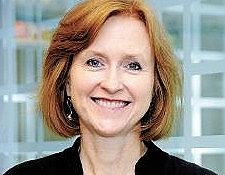
When GlycoMimetics Inc. announced a license agreement with Pfizer three years ago, the decision seemed like a no-brainer. This deal, which surrounded the sickle cell drug candidate GMI-1070, was worth up to $340 million, after all. The Gaithersburg company seemed to be in an enviable spot, while some of its Maryland counterparts struggled.
Behind the scenes, the decision to partner with big pharma didn’t come easy. CEO Rachel King, speaking this morning at a Tech Council of Maryland panel in Bethesda, recounted the calculus behind the move.
back to top 
September 2014 is bringing 5 NEW CLASSES to our schedule that will help you
BE THE ENTREPRENEUR THAT YOU WANT TO BE!

Aspiring Entrepreneurs:
1. The Intentional Entrepreneur: This one day class will help you identify your entrepreneurial skills and abilities, as well as address any concerns you may have about owning your own business. This class is a must for anyone considering starting their own business!
2. The Intentional Entrepreneur for Veterans: For veterans thinking about starting a business.
Early Stage Entrepreneurs:
3. New Venture: For the entrepreneurs in the early stages of business development.
4. New Venture for Veterans: For veterans seeking to launch an idea.
5. Tech Venture: For entrepreneurs in the tech or life sciences field seeking to start a business. (BHI EIR Todd Chappell will be one of the instructors teaching this class)
back to top 

Novavax Inc. (Nasdaq: NVAX) said Wednesday it has raised $115 million in gross proceeds by selling 28.75 million shares of its common stock, which the Gaithersburg biotech plans to pour into its pipeline.
Some of the net proceeds will go toward advancing Novavax’s Respiratory Syncytial Virus (RSV) nanoparticle vaccine into a Phase 2 trial in elderly subjects this year. The biotech is also studying its RSV vaccine for pediatric and maternal populations.
back to top 

EntreMed (Nasdaq: EMND) has been through plenty of turbulence. In 1998, it was the subject of a breathless front page New York Times story suggesting the biotech was on the verge of curing cancer, based on promising mice studies. Those hopes (and EntreMed’s share price) deflated in the coming years, when the company found itself shedding jobs and executives and struggling to survive.
But through it all, EntreMed remained EntreMed. No longer: the Rockville company’s shareholders have voted to change its name to CASI Pharmaceuticals, as of June 16. The company will now trade under the ticker symbol CASI.
back to top 

MedImmune, its parent company AstraZeneca and a handful of other pharma companies and health groups announced a broad lung cancer trial on Monday, looking to use patients’ genomic profiles to match them with therapies.
The Lung Cancer Master Protocol, or Lung-MAP, trial will explore five product candidates as treatments for advanced squamous cell lung cancer. That includes MedImmune’s MEDI4736, according to spokeswoman Tracy Rossin.
back to top 

Maryland has retained top rankings in the U.S. Chamber of Commerce Foundation’s annual Enterprising States study released Wednesday.
For the third consecutive year, the State ranked No. 1 in Innovation and Entrepreneurship. For the second year in a row, Maryland ranked third in the nation for its Talent Pipeline.
back to top 

Several Baltimore startups are among the winners of this year’s Maryland Incubator Company of the Year awards.
The winners were announced Tuesday evening at an awards ceremony at the American Art Visionary Museum in Baltimore. The awards are supported by the Maryland Technology Development Corp., the Maryland Department of Business and Economic Development, the Maryland Business Incubation Association, M&T Bank and several other state companies.
back to top 

The University of Maryland, along with the George Washington University and Virginia Tech, have added the Johns Hopkins University to the National Science Foundation’s Innovation Corps (I-Corps ™) regional collaboration called DC I-Corps. JHU becomes the newest member university of the National Science Foundation’s National Innovation Network.
The NSF has approved a request from the three original universities to officially include Johns Hopkins in the I-Corps program’s “node” in the Mid-Atlantic called DC I-Corps, which was formed last year with $3.75 million in NSF funding. It is one of five regional nodes established nationwide by the NSF, and the first to expand its membership. Together, these five nodes currently form the basis of the National Innovation Network, which links together select universities with established entrepreneurs and venture capitalists to train faculty and student researchers from throughout the U.S. to transform ideas into products and get them on the market.
back to top 

Two early career physician-scientists, Peter de Blank and Matthew R. Steensma, have been named inaugural winners of the Francis S. Collins Scholars Program in Neurofibromatosis Clinical and Translational Research, sponsored by the Neurofibromatosis Therapeutic Acceleration Program (NTAP) at The Johns Hopkins University. The program will create a community of expert clinician-scientists and groom them to be leaders in neurofibromatosis type 1 (NF1) research and clinical care. The awards will be presented at a ceremony on Tuesday, June 10, at the Whittemore House in Washington, D.C.
“It has become increasingly hard for young clinician-scientists to get the funding and dedicated time necessary to become leaders in translational science for rare diseases such as NF1,” says Jaishri Blakeley, M.D., director of the Johns Hopkins Comprehensive Neurofibromatosis Center and NTAP. “We created the Francis S. Collins Scholars Program, recognizing that a cadre of well-trained and dedicated clinician-scientists focused on NF1 is critical in order to make the scientific leaps that are possible in this modern era.”
back to top 

Researchers at WellDoc® today presented updated results of its hypoglycemia prediction technology at this week’s 2014 American Diabetes Association 74th Scientific Sessions. In previous work, using just one week of blood glucose data, WellDoc’s models were shown to predict correctly 90 percent of the time that hypoglycemia would occur the following day. Today, WellDoc announced an enhanced model that incorporates both glucose and medication data has demonstrated the ability to predict hypoglycemia within a specific hour.
“The challenge in predicting hypoglycemia is that most patients with type 2 diabetes measure their blood glucose once or twice per day. This so-called ‘sparse data’ makes mathematical forecasting difficult,” states WellDoc Chief Data Science Officer, Anand Iyer, Ph.D. “We used machine learning algorithms which allow the computer to detect patterns and make predictions after being trained on thousands of data points.”
back to top 

Upcoming Funding Opportunity Deadlines -NEW FORMS-C Required for SBIR/STTR applications
The next NIH Small Business Innovation Research (SBIR) and Small Business Technology Transfer (STTR) Omnibus deadline is only two months away on August 5, 2014, which means your small business should be preparing your application.
back to top 

kloudtrack®, a leader in cybersecurity and cloud computing (cyber|cloud) technologies and solution services for sensitive data, process management and Governance, Risk and Compliance (GRC), will team up with the University of Maryland’sRobert H. Smith School of Business and Cisco Systems (NASDAQ:CSCO) to establish the first Innovation Sandbox™ exchange catering to the innovation, workforce development and technology roadmapping needs of public and private sector healthcare, and medical and life science (HealthTech) organizations.
The project was announced as part of today’s Maryland Economic Development Association Summer Conference at UMD, themed “Health Innovations: Impact on Economic and Workforce Development.”
back to top 

EY unveiled on Thursday evening its 2014 Entrepreneur of the Year Maryland winners in eight categories.
The honorees were announced in front of a packed crowd at a black-tie event at the Hilton Baltimore. The awards program recognizes high-growth entrepreneurs who demonstrate excellence and success in such areas as innovation, financial performance and personal commitment to their businesses and communities.
back to top 

America is still the world leader in creating new medical technologies that have the potential to save lives. So why is it so tough for the entrepreneurs and investors behind these new products to make a living here?
One reason, according to venture capitalists, is long, costly delays before getting new treatments to market, in some cases caused by health insurers dragging their feet when it comes to agreeing to reimburse doctors for using new medical products.
back to top 

Maryland is missing out on as many as 7,000 jobs and millions of dollars of investment as companies build data centers in neighboring Virginia, according to a report from Baltimore accounting firm Glass Jacobson.
Data centers provide cloud storage and are crucial to supporting the kinds of technology firms that have been opening in and relocating to Baltimore.
back to top 

After all the angst generated by the Affordable Care Act, and all the punditry, noise, and debate that accompanied its rollout, you might conclude that there are no practical solutions to our healthcare challenges. But, of course, there are new answers and solutions and new, creative approaches to solving healthcare problems. You just have to look at innovative, private sector enterprises. And if you do, you might find one of the more innovative answers to eldercare right there in your old-fashioned television set. Just ask Kian Saneii, CEO of Independa.
But first, a little background. One of the more troubling and difficult areas of healthcare is the growing needs of the elderly, including both preventive care and the management of long-term, chronic illnesses. This has been a well-understood fact for quite some time. Saneii and the Independa team he began assembling in 2009 set out to find practical real-world solutions to these challenges. How they did this is an instructive case study in innovation, pragmatism and common sense.
back to top 

A new report from Rock Health looking at the future of the biosensor wearables market shows a market in transition. The next generation of wearables is more targeted towards patient populations, particularly chronic conditions. In a Google hangout about the report, Malay Gandhi, a co-author of the report, talked about some of the qualities that are making these wearables more appealing to consumers and the b2b market and features that will give them staying power.
Athletic trackers aimed at the mass market have lost ground Nike’s exit from the wearables market shows there are far more fitness tracking devices than the market can support. There’s also a certain amount of consumer fatigue because the accuracy of fitness bands can vary. It’s difficult to keep most consumers interested in using them after six months. That prompted The New York Times article comparing these wristbands to “digital snake oil.”
back to top 
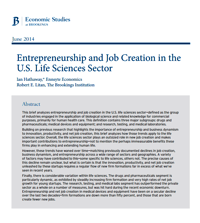
This brief analyzes entrepreneurship and job creation in the U.S. life sciences sector—defined as the group of industries engaged in the application of biological science and related knowledge for commercial purposes, primarily for human health care. This definition contains three major subgroups: drugs and pharmaceuticals; medical devices and equipment; and research, testing, and medical laboratories.
Building on previous research that highlights the importance of entrepreneurship and business dynamism to innovation, productivity, and net job creation, this brief analyzes how those trends apply to the life sciences sector. Overall, the life sciences sector plays an outsized role in new job creation and makes important contributions to entrepreneurship—not to mention the perhaps immeasurable benefits these firms play in enhancing and extending human life.
back to top 

Tiny biotech startups will have a new place to germinate in the San Francisco Bay Area. Healthcare giant Johnson & Johnson’s Janssen Labs division is opening a new 30,000 square foot incubator in the biotech-rich suburb of South San Francisco.
The flexible space, complete with common rooms, wet labs, and offices, could hold as many as 50 companies, according to Melinda Richter, a Bay Area incubator veteran tapped last year to head Janssen Labs nationwide. That would roughly double the group’s nationwide capacity, part of the international company’s aggressive reach beyond its walls to find, and fund, new science and technology. “We’re taking a big footprint,” Richter said, with half devoted to shared research equipment and services and half to space that can be customized to individual tenants.
back to top 

The heightened private equity and venture capital (PEVC) deal activity in the global healthcare industry during the recession years, 2008-2010, witnessed a decline post-2010. However, the fall in deals was not uniform among the constituent sectors, with the pharmaceutical, biotechnology and healthcare equipment sectors experiencing a much sharper decline in investor interest than the healthcare technology and provider segments. Investors started to bet on providers based with the conviction they can provide quicker and safer returns than the pharmaceutical and biotechnology space, which is ridden with regulatory challenges and patent expiries.
New analysis from Frost & Sullivan’s Private Equity and Venture Capital Investment in the Global Pharmaceutical and Biotechnology Industry reveals the total number of PEVC deals in the pharmaceutical and biotechnology industry decreased from 1063 in 2010 to 480 in 2013. Though the returns from the pharmaceutical and biotechnology industry have been dwindling, they are better compared to the performance of other industries.
back to top 

Although it seems raising as much venture capital as humanly possible is Silicon Valley’s mantra, there are reasons to be cautious when signing termsheets. Startups raising a couple of million dollars had a median exit price of more than $10 million, while the outcome for those raising double that was actually worse, a recent study shows.
The report, by San Francisco-based Exitround, a marketplace for M&A deals for small tech companies, found companies raising $2 million to $3 million were more likely to exit at a valuation over $10 million, while for startups raising $3 million to $10 million the median exit price was less.
back to top 

A U.S. Senate panel on Tuesday approved a budget bill that would increase funding for the National Institutes of Health by $605 million for the fiscal year that begins October 1.
Lawmakers on the Senate’s appropriations subcommittee that oversees education, health and labor programs passed legislation that would increase the NIH’s budget to nearly $30.5 billion in the coming year. That $605 million jump represents a greater increase than the $198-million increase the Obama administration had requested.
back to top 

A highly personalized medical technique is allowing patients with advanced kidney cancer to live nearly three times as long as they normally do. In an experiment involving 21 patients, around half lived more than two and half years after diagnosis with kidney cancer that had begun to spread. Five patients are alive after more than five years.
“That seems to be out of proportion with what you would expect for any commercial therapy and longer than what you would expect from patients with similar prognostic variables,” says Robert Figlin, an oncologist at Cedars-Sinai Samuel Oschin Comprehensive Cancer Institute in Los Angeles, who is leading the study.
back to top 
I read an interesting Wall Street Journal article recently that discussed the war between tech companies to control future consumer distribution platforms. The article explains that the cash-flush giants “…each want to own the digital platform where people communicate, shop and seek entertainment.” This got me thinking about platforms in healthcare. read an interesting Wall Street Journal article recently that discussed the war between tech companies to control future consumer distribution platforms. The article explains that the cash-flush giants “…each want to own the digital platform where people communicate, shop and seek entertainment.” This got me thinking about platforms in healthcare.
Right now, it’s fair to say that there are three major healthcare platforms. Insurance companies such as Aetna, WellPoint, United Healthcare and Humana have substantial members. However, mentioned in the article is the continual need for innovation. Tech behemoths are“…aware of all the big companies that died because they rested on their laurels.”
back to top 
|
|
|



|
In This Issue
|
|
About BHI
BioHealth Innovation (BHI) is a regionally-oriented, private-public partnership functioning as an innovation intermediary focused on commercializing market-relevant biohealth innovations and increasing access to early-stage funding in Maryland.
|
|
|
|

June 15-19
Washington, DC

June 16-18
Gaylord Hotel and Conference Center at Washington DC National Harbor

June 15-19
Washington, DC

June 19
Germantown Innovation Center

June 21
University of Maryland Shady Grove Conference Center
|
BioHealth Job Opportunities
|
Newsletter designed and distributed by:

|
|
|
 |
|
The information contained in this website and newsletters is for general information purposes only. The information is provided by BioHealth Innovation via its newsletters, but not written or endorsed in any way by BioHealth Innovation unless otherwise noted. While we endeavor to keep the information up to date and correct, we make no representations or warranties of any kind, express or implied, about the completeness, accuracy, reliability, suitability or availability with respect to the website or the information, products, services, or related graphics contained on the website for any purpose. Any reliance you place on such information is therefore strictly at your own risk.
|
|
|
|
|
|
|
– BHI offers program that guides biohealth startups in securing federal funding –
ROCKVILLE AND BALTIMORE, MARYLAND, June 10, 2014 – BioHealth Innovation, Inc. (BHI) announced today that two local biohealth companies to which it has provided strategic assistance, N5 Sensors, Inc. and BioDatomics, have secured Small Business Innovation Research (SBIR) awards. N5 Sensors, a BHI client, received two awards: one from the Enivronmental Protection Agency (EPA) and one from the National Science Foundation (NSF). BioDatomics, which participated in a federal funding assistance program offered by BHI, secured an SBIR grant from the National Institutes of Health (NIH)1. The U.S. federal government’s SBIR program encourages domestic small businesses to engage in federal research and development that has the potential for commercialization. The SBIR program empowers these companies to develop their trade and provides a path to profitability.
“BHI is dedicated to supporting start-up biohealth companies in Central Maryland in their submission of competitive SBIR applications,” said Ethan Byler, Director, Innovation Programs, BioHealth Innovation, Inc. “We congratulate N5 Sensors and BioDatomics on receiving SBIR grants from the EPA, NSF and the NIH, respectively.”
back to top 

Senseonics, a privately held medical device company focused on the development and commercialization of the first fully implantable, long-term continuous glucose monitoring (CGM) system, announced that it has raised an additional $20 million of private equity financing. Senseonics also announced that Mirasol Panlilio, formerly of Abbott Diabetes Care and LifeScan, has joined the company as Vice President of Global Sales and Marketing.
Current investors Anthem Capital, Delphi Ventures, Greenspring Associates, Healthcare Ventures, New Enterprise Associates and other strategic partners all participated in the financing round. Senseonics intends to use the proceeds to continue its product development initiatives including completing pivotal trials in Europe, obtaining CE mark, and initiating IDE trials in the United States. “We’re very happy of the continued support from our investors as we near the completion of the product development efforts for our first generation long-term CGM system, “ said Tim Goodnow, CEO and President. Senseonics has recently begun its European pivotal trials and expect to complete site initiation of all seven European sites before the end of summer.
back to top 

Rockville-based CytImmune Sciences Inc. has raised $400,000 from the Maryland Venture Fund, Montgomery County and an unnamed venture investor to push Aurimune — a drug that pairs a decades-old tumor-fighting agent with gold nanoparticles — into phase 2 trials.
The Maryland Venture Fund led the round with $200,000, with another $100,000 coming from the Montgomery County Department of Economic Development and the unidentified investor.
back to top 

Ventana Medical Systems, Inc. (Ventana), a member of the Roche Group and MedImmune, the global biologics research and development arm of AstraZeneca, today announced they are jointly developing a PD-L1 (SP263) immunohistochemistry assay to enroll patients in clinical trials for MedImmune’s MEDI4736 anti-PD-L1 therapy for non-small cell lung carcinoma. This includes the recently commenced MEDI4736 ATLANTIC trial that will enroll only patients who express PD-L1 as determined by the VENTANA assay.
MEDI4736 is an investigational, engineered, human monoclonal antibody directed against programmed cell death ligand 1 (PD-L1). Signals from PD-L1 help tumors avoid detection by the immune system. It is believed that by targeting PD-L1, MEDI4736 may block this ligand from sending out signals to T-cells to ‘ignore’ tumor cells, thereby countering cancer’s immune-evading tactics.
back to top 

GSK, formerly Glaxo SmithKline, and the Philadelphia Foundation have announced a $5 million grant package available to non-profits which will lead to healthier lives.
It’s called the GSK IMPACT Grant. IMPACT stands for Innovative, Measured, Partnered, Accountable, Community Centered and Transformative. Katie Loovis is GSK’s director of Community Relations.
back to top 

DATE: June 13, 2014, 8:30 a.m.-5 p.m.
LOCATION: Institute for Bioscience and Biotechnology Research, University of Maryland, in Rockville, MD
Emerging Strategies for the Production and Characterization of Biosimilars
The biomanufacturing industry faces an unprecedented challenge with the emergence of biosimilars. The pathway to approval for biosimilars is a fluid process and several key aspects are still not determined. The University of Maryland and the National Institute of Standards and Technology (NIST) will deliver a one-day symposium on the current trends of characterization and production of biosimilars. On Friday, June 13, 2014 at 8:30 am join the thought-leaders, policy-makers, and creators of biosimilars as we present current trends, ideas, and predictions.
back to top 
 June 11-12, 2014 June 11-12, 2014
Find out more about Strand Life Sciences here.
Learn about the current and future initiatives of the International Collaboration for Clinical Genomics (ICCG)! As part of our commitment to data sharing and collaboration to improve patient care, ICCG is creating a universal, clinical-grade database of genomic variation (including structural and sequence variants), available to the public through resources such as NCBI’s ClinVar database, and much more. We encourage the attendance of clinical laboratory personnel (from both cytogenetics and molecular communities), clinicians, genetic counselors, and others that are interested in setting the standards for clinical-grade databases of genomic variation.
back to top 

PRESENTER:
Karen Ambrose, Program Director, Business, Professional Licensure and Certification Programs
Montgomery College, Workforce Development and Continuing Education
ABSTRACT:
Montgomery College has joined with the world renowned Kauffman Foundation in support of current and future business owners before, during, and after the start-up process. Our plethora of courses is designed to meet the entrepreneurial needs of the aspiring business person and those who dream of business ownership.
Free monthly program offered through the Gateway to Innovation: Montgomery County Welcome Center for Federal and Academic Tech Transfer. For more information and additional calendar items, please visit TechTransferConnection.com.
Engage with others in the tech transfer field by joining the Gateway to Innovation LinkedIn Group.
back to top 

MdBio Foundation is looking for solutions to build a diverse and highly qualified STEM workforce. Read the latest from CEO Brian Gaines published in the Washington Business Journal.
Google turned heads last week when it disclosed that its workforce includes a troublingly low rate of women and minorities. We applaud Google for its leadership in sharing this data. The disclosure sparked national questions about the hiring practices at our most innovative companies.
back to top 

Johns Hopkins biomedical engineering students have designed a lightweight, easy-to-conceal shirtlike garment to deliver lifesaving shocks to patients experiencing serious heart problems. The students say their design improves upon a wearable defibrillator system that is already in use and should help persuade patients at risk for sudden cardiac arrest to wear the system around the clock.
“In two studies, up to 20 percent of patients who received the defibrillator garment that’s already available did not keep it on all the time because of comfort and appearance issues, problems sleeping in it, and frequent ‘maintenance alarms,’ which occur when the device does not get a good signal from sensors on the patient’s skin,” says Sandya Subramanian, who led the undergraduate team that built the new prototype. “We set out to address these issues and design a device that heart patients would be more likely to wear for longer periods of time—because their lives may depend on it.”
back to top 
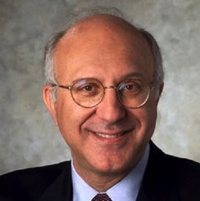
Simeon Taylor, MD, PhD, a seasoned pharmaceutical executive who has served in senior positions with Eli Lilly and Bristol-Meyers Squibb, has joined the University of Maryland, Baltimore (UMB) as industry liaison with its Center for Clinical Trials and Corporate Contracts (CCT).
In his new role for CCT, he will assist faculty in developing research strategies that will maximize corporate partnering and funding opportunities, and the possible creation of valuable intellectual property. CCT is part of the University’s Office of Research and Development, and the part-time consultancy is funded in keeping with the University’s 2011-2016 Strategic Plan
back to top 

The U.S. National Institutes of Health has awarded $25 million to the J. Craig Venter Institute to back an initiative to study infectious diseases like malaria and influenza at the genetic level to help find better treatments and preventive measures.
The institute, with offices in Maryland and California, will use the 5-year grant from NIH to establish the Genome Center for Infectious Diseases to study the genetic secrets of a wide range of bacteria, viruses and parasites, officials said on Thursday.
back to top 

The University of Maryland, Baltimore County and the Chesapeake Innovation Center are teaming up to teach cyber entrepreneurs how to pitch to investors.
The seven-week program — Perfect Pitch — is scheduled to begin in September and conclude at the end of October. The program will end just before the start of the CyberMaryland Conference on Oct. 29.
back to top 

Early June is Health Datapalooza time, and this year’s event was again a whirlwind of energy, insights, and over 2,000 very motivated and passionate health data enthusiasts (health datapaloozers doesn’t sound right). The hallway conversations provided tons of of pragmatic, productive and engaging conversations, inspired by keynotes and presentations from Todd Park, Bryan Sivak, Jeremy Hunt, Atul Gawande, Steve Case, Jerry Levin, Vinod Khosla, Kathleen Seblius, Dwayne Spradlin, Francis Collins, Fred Trotter, and many more (if you haven’t heard of some of them, look them up, it’s worth your time).
back to top 

The University Economic Development Association (UEDA) is currently seeking nominations for its annual Awards of Excellence program, which recognizes cutting edge university-based economic development initiatives from across the country. The Awards of Excellence Program recognizes higher education institutions and their partners who are transforming their campuses into engines of economic prosperity through creative initiatives in five categories:
- Community Connected Campus: initiatives that promote the physical development of quality connected campuses and their surrounding communities;
- Research and Analysis: initiatives that enhance the capacity of colleges and universities to provide new forms of research and tools for community, economic and workforce development practitioners;
- Leadership and Collaboration: initiatives that support the development of collaborative economic development strategies and the leaders required to implement them;
- Innovation and Entrepreneurship: initiatives designed to support startups, high-growth companies and clusters within a region; and
- Talent Development: initiatives that promote the development of 21st-century skills.
back to top 

ERIC KING, 30, of Northern Liberties, is founder and CEO of Grand Round Table, a startup on 3rd Street near Market that develops software to help doctors make complicated diagnoses. GRT, which launched in 2012, is getting the correct diagnoses about 70 percent of the time. The company, which was part of the first DreamIt Health accelerator in 2013, has three full-time employees and has raised $110,000 from the Wharton Venture Initiation Program and Ben Franklin Technology Partners.
back to top 
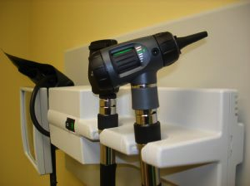
PETER PRONOVOST: The biggest misperception is certainty. When you receive a diagnosis from a doctor, we don’t always know for 100% sure if it is correct. In reality, medicine is an inexact science. In 2012, Johns Hopkins researchers, including myself, found that in intensive-care units alone, diagnostic errors may account for as many deaths as breast cancer in the U.S.
This is part of a growing body of research highlighting the need to focus on diagnostic accuracy. We need to create health-care systems in which learning is incorporated into daily practice, so that physicians can receive feedback on the accuracy of their diagnoses. We can do this by standardizing care around best practices and standardizing data collection regarding clinicians’ diagnoses and the results they get: Health information technology makes this possible.
back to top 

In the translational medicine space — where medical research is “translated” into health tools and solutions for patients — the majority of engaged physicians are either biomedical researchers interested in advancing our understanding of the basic science, or are practicing doctors who want to improve clinical practice while focusing on patient care.
The number of physicians who receive training in understanding this translational research space is few, and even fewer are those who are able to take this skill set into the market to develop new technologies based off this understanding.
back to top 

At Medgadget we speak with quite a few physicians-turned-entrepreneurs, and one of the most enthusiastic and impressive we’ve known is Dr. Amy Baxter. We first met Dr. Baxter at the AARP conference in Atlanta last October where she was showing off a simple, yet effective tool she developed for pain relief called “Buzzy.” There’s been a lot of, well, buzz about the device ever since she pitched it on Shark Tank and turned down the investors. Informed by her experiences as a pediatric emergency physician, Dr. Baxter took time out of her schedule to answer a few questions we had about the device and why she thinks everyone who experiences pain should have one.
back to top 

A biotech entrepreneur wants to arm physicians with an electronic companion diagnostic tool to help hospitals reduce hospital-acquired infections.
Last year, antibiotic-resistant infections caused more than two million illnesses and 23,000 deaths in the U.S. alone, according to the Centers for Disease Control. About 70 percent of those antibiotic-resistant infections were caused by hospital-acquired infections.
back to top 

As the United States slowly emerges from the Great Recession, led by our cities and metropolitan areas, a remarkable shift is occurring in the spatial geography of innovation.
For the past 50 years, the landscape of innovation has been epitomized by regions like Silicon Valley — suburban corridors of spatially isolated corporate campuses, accessible only by car, with little emphasis on the quality of life or on integrating work, housing and recreation.
back to top 

Disruptive change is now a fact of life for many industries. Healthcare is no exception. Although healthcare has been changing for decades—think about the introduction of diagnosis-related groups (DRGs) or the initial push toward managed care in the 1980s—the Affordable Care Act (ACA) promises to accelerate both the rate of change and the level of uncertainty confronting the industry. Payors face navigating a difficult transition: from an industry in which the customer is often a corporation or small company and the business is paying claims to one in which consumers make healthcare purchasing decisions, the direct provision of care may be necessary for success, and consumer and retail capabilities really matter. Furthermore, payors must make this transition amid regulatory and consumer uncertainty and in a fairly short time frame. This industry and business-model shift is on a scale that few companies and few sectors in the economy have been through.
back to top 

Meet the humble “Magnetosperm,” a tiny, sperm-like robot with incredible potential in the medical world.
It’s approximately six times longer than a human sperm, and scientists at the American Institute of Physics say in a paper that Magnetosperm “technology could be used not only to help with fertilization, but also chemotherapy treatment.”
back to top 
|
|
|



|
In This Issue
|
|
About BHI
BioHealth Innovation (BHI) is a regionally-oriented, private-public partnership functioning as an innovation intermediary focused on commercializing market-relevant biohealth innovations and increasing access to early-stage funding in Maryland.
|
|
|
|

June 11-12
Bethesda North Marriott

June 11
Germantown Innovation Center

June 13
Institute for Bioscience & Biotechnology Research

June 15-19
Washington, DC

June 15-19
Washington, DC
|
BioHealth Job Opportunities
|
Newsletter designed and distributed by:

|
|
|
 |
|
The information contained in this website and newsletters is for general information purposes only. The information is provided by BioHealth Innovation via its newsletters, but not written or endorsed in any way by BioHealth Innovation unless otherwise noted. While we endeavor to keep the information up to date and correct, we make no representations or warranties of any kind, express or implied, about the completeness, accuracy, reliability, suitability or availability with respect to the website or the information, products, services, or related graphics contained on the website for any purpose. Any reliance you place on such information is therefore strictly at your own risk.
|
|
|
|
| | | | | | | | | |